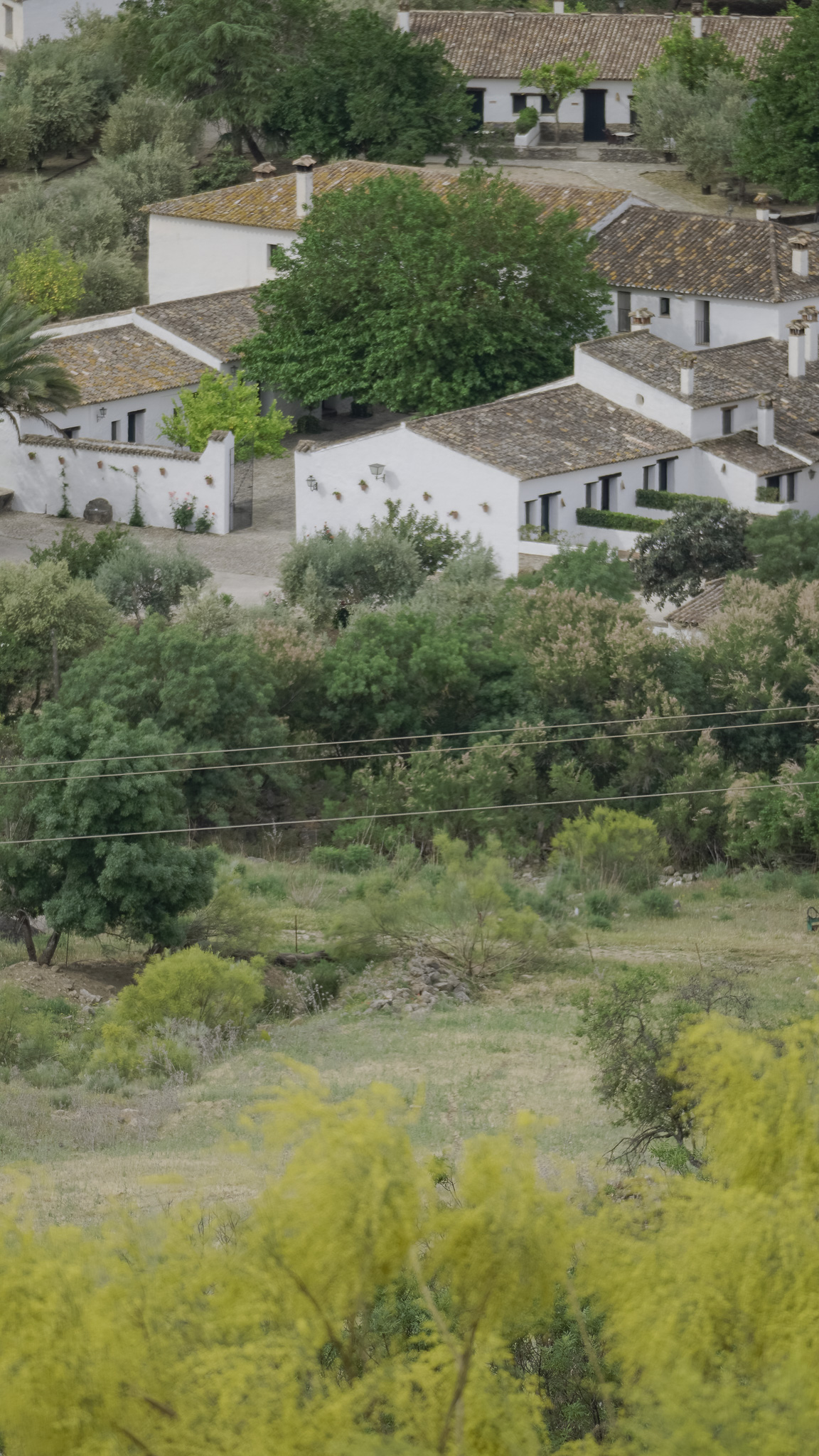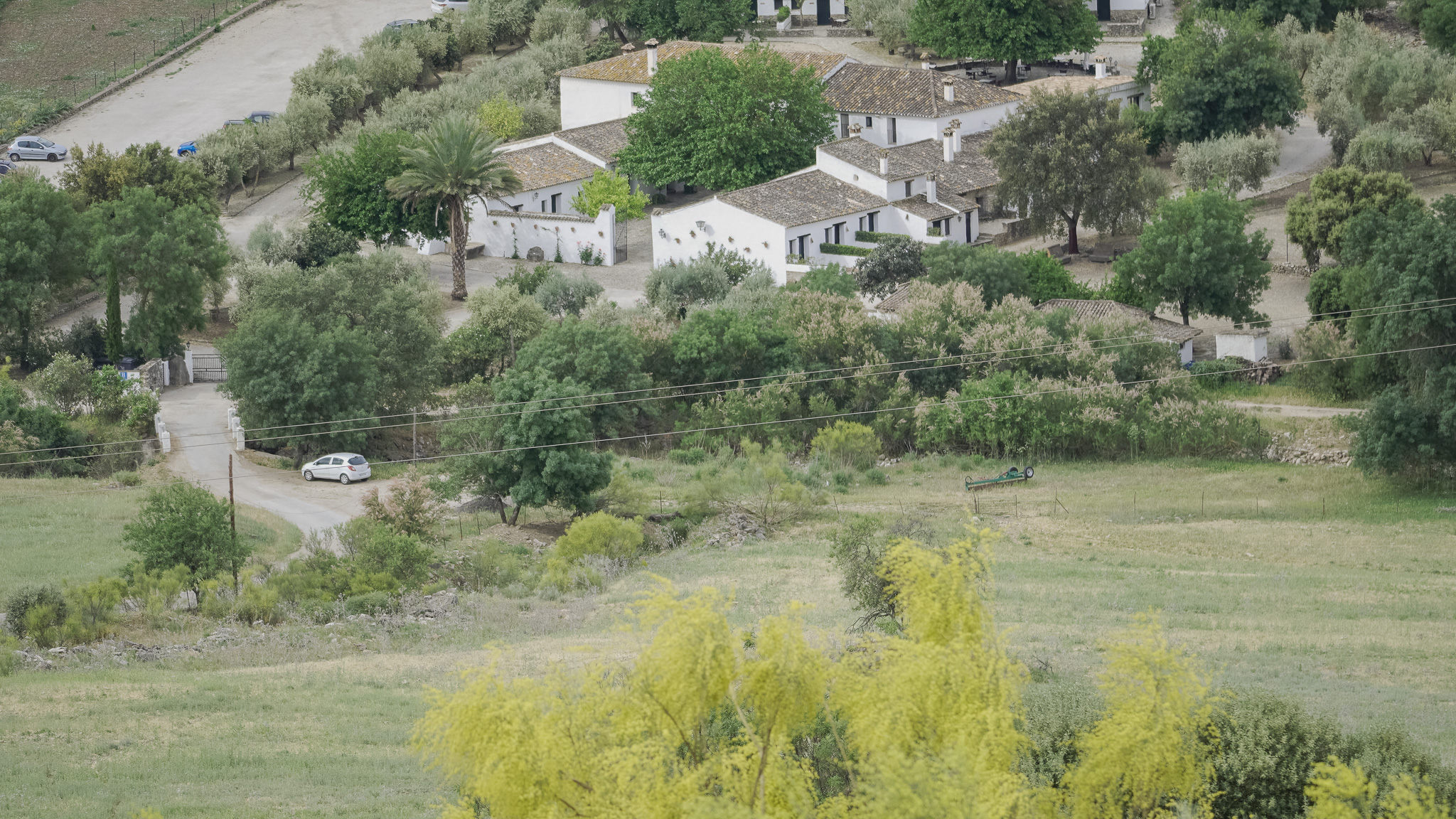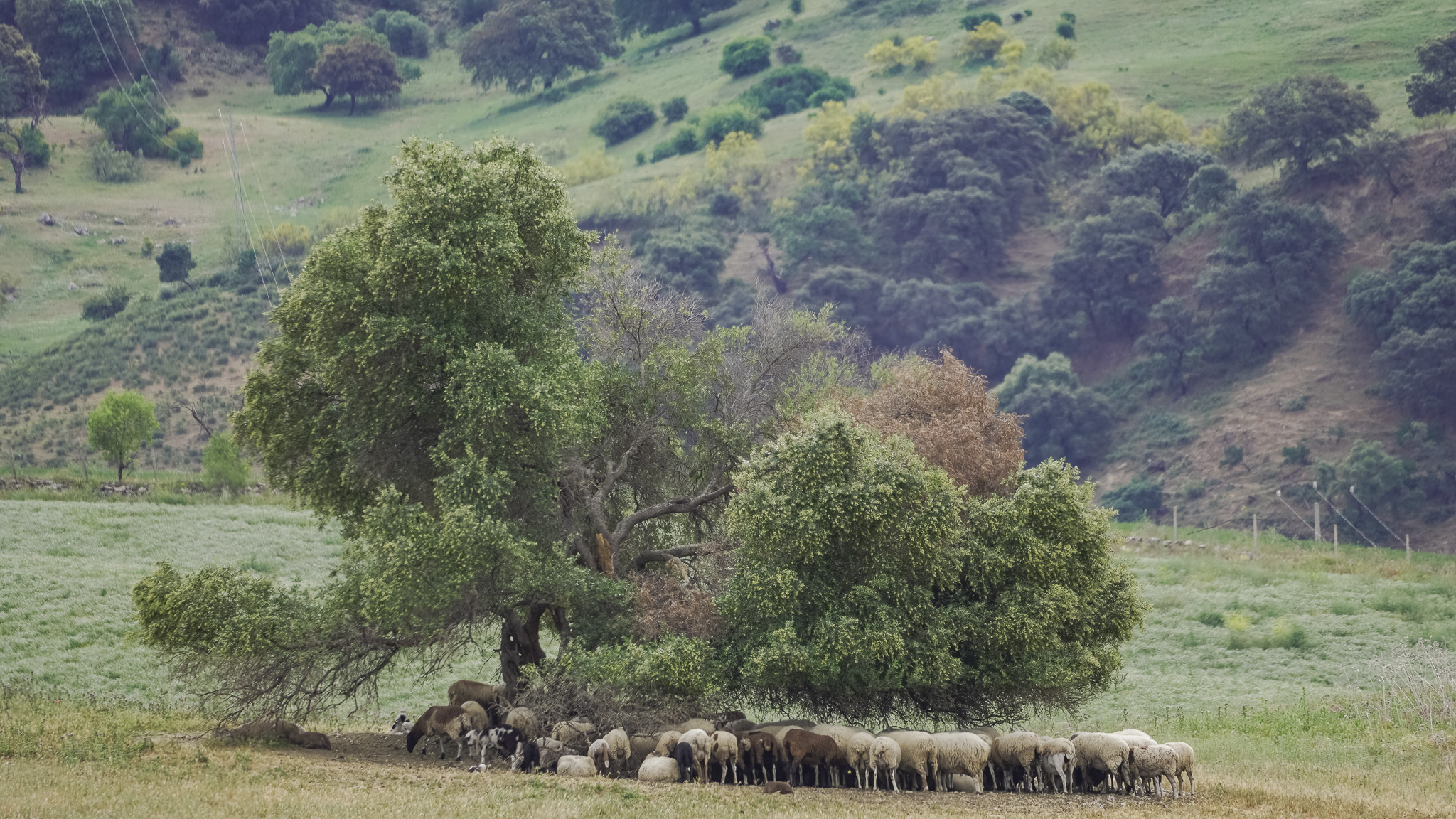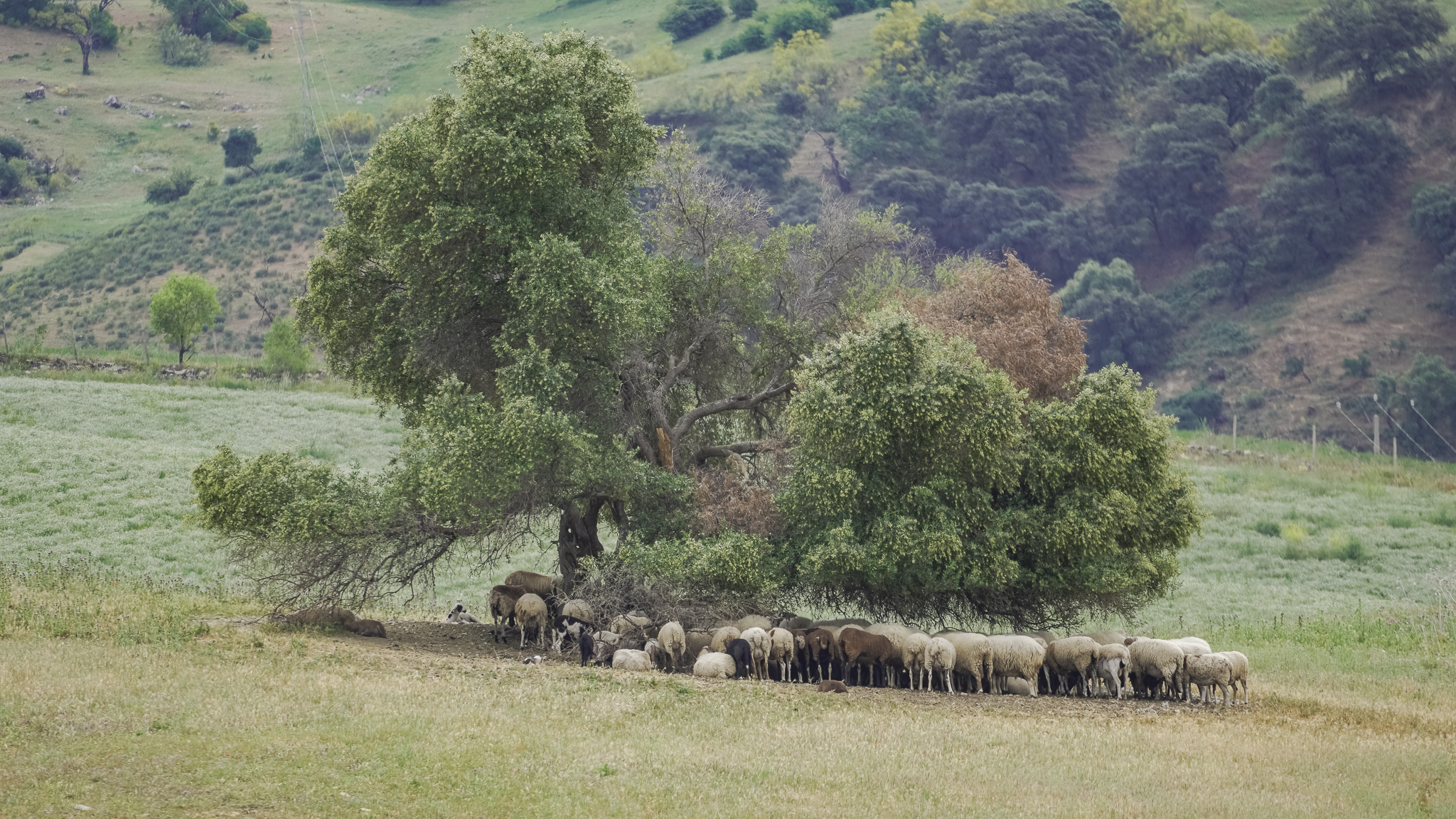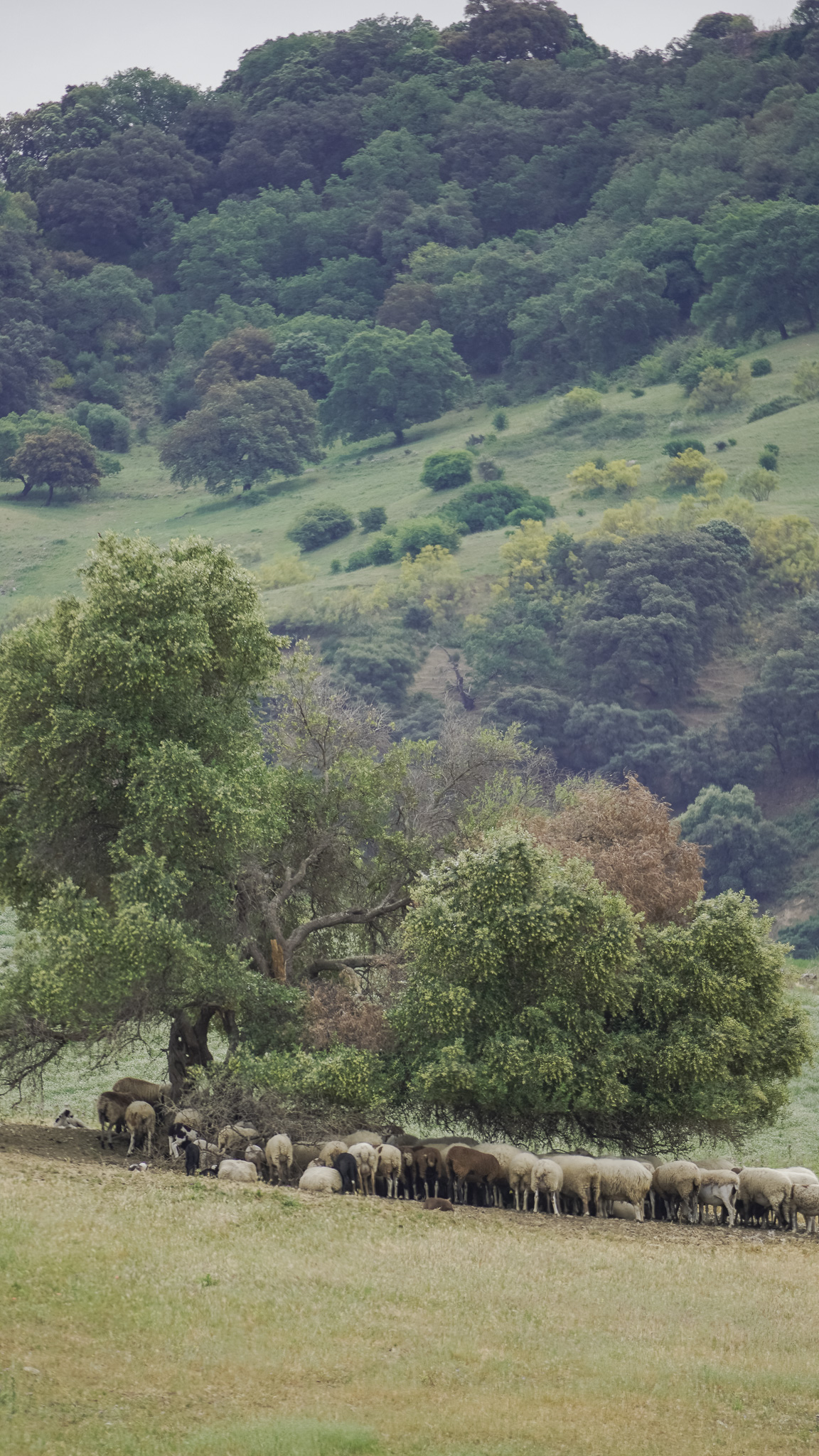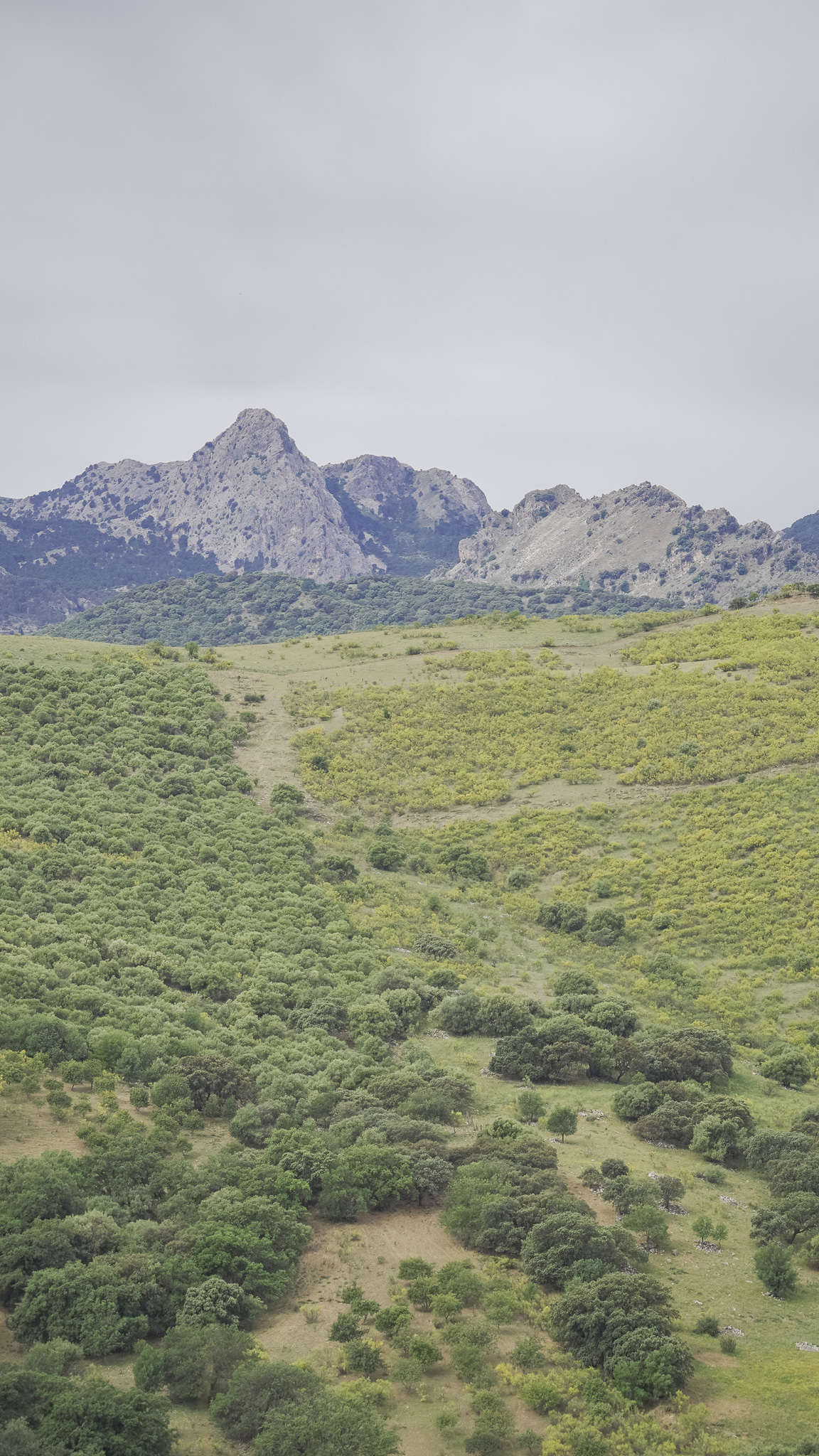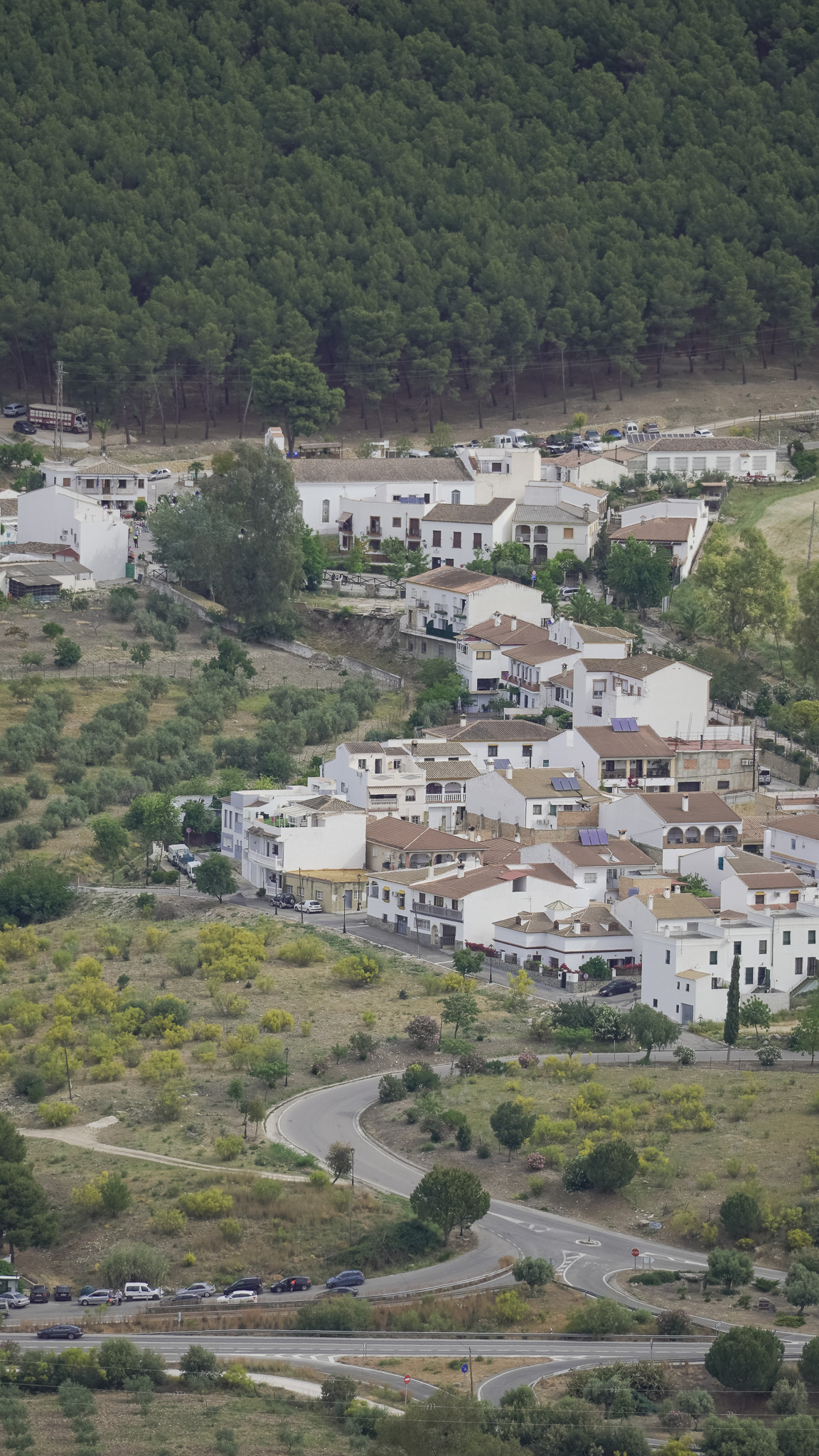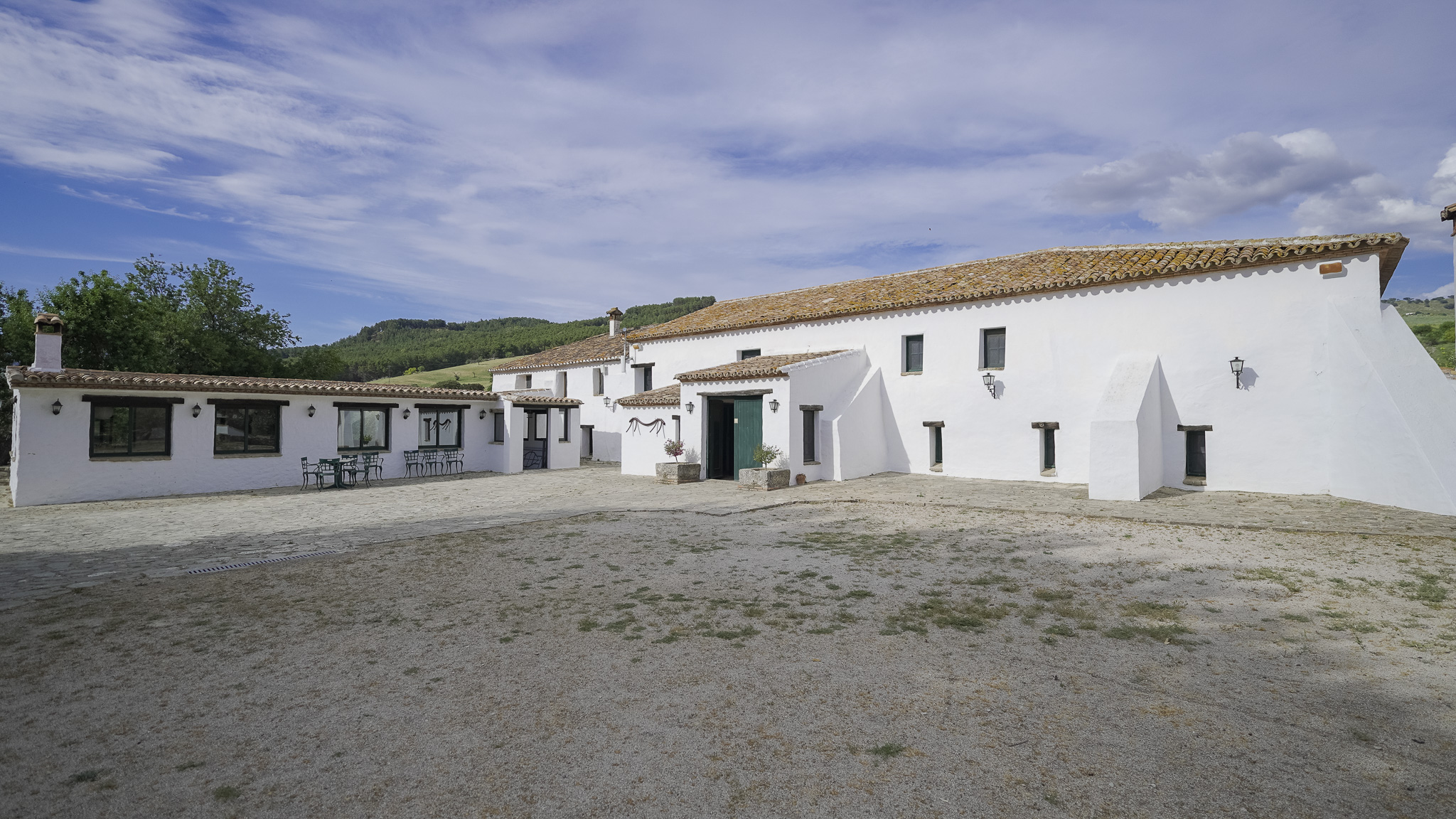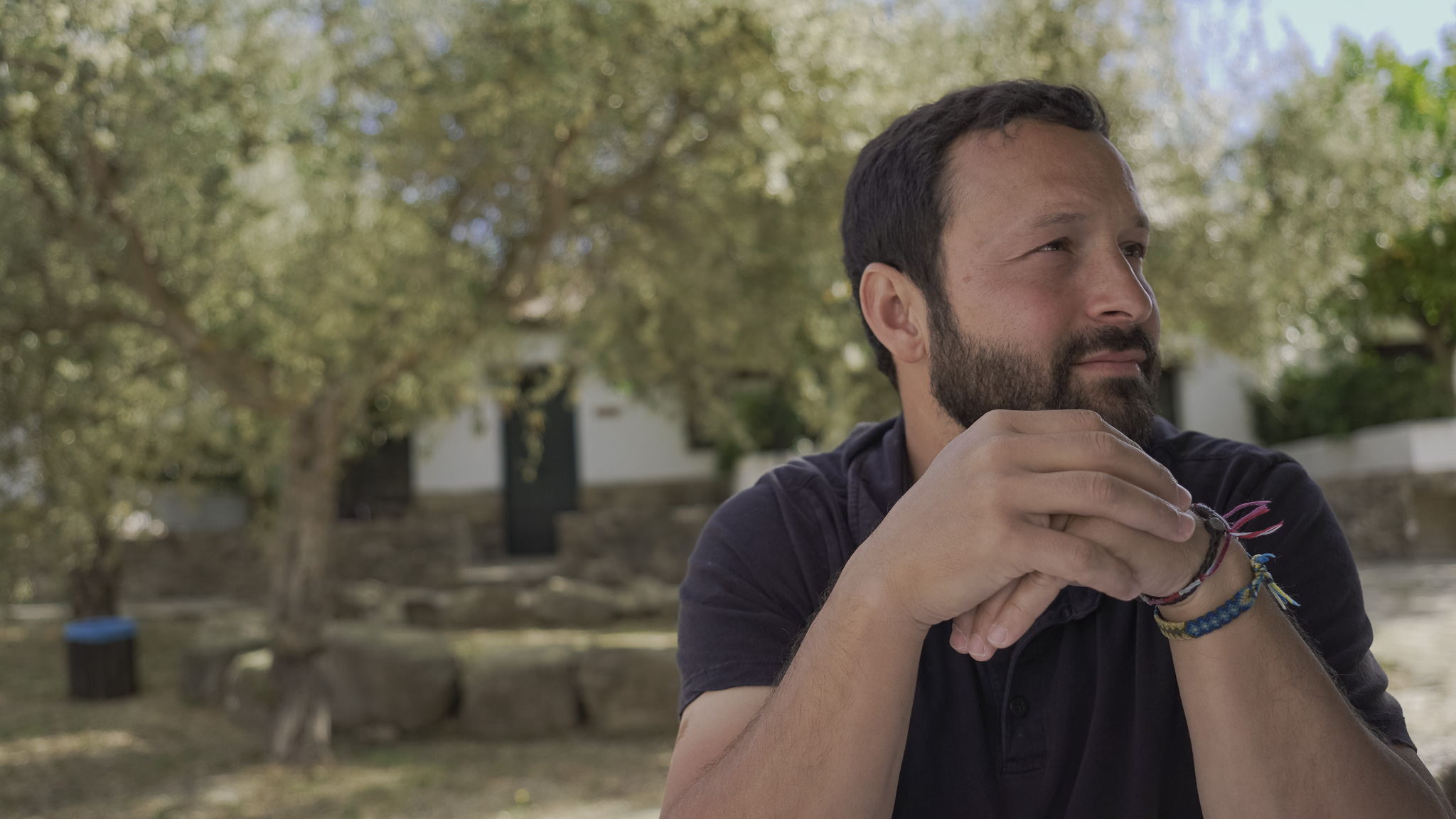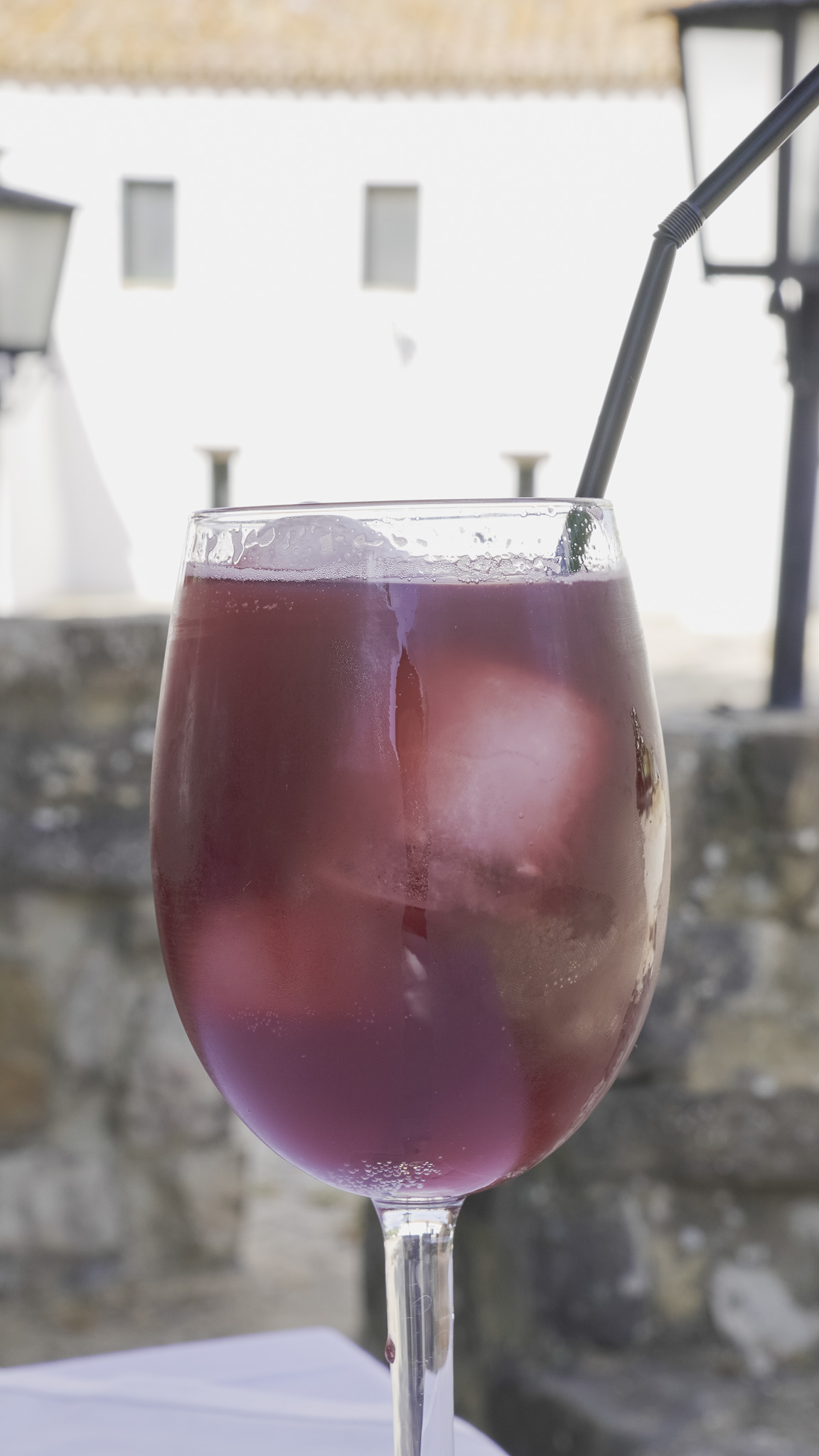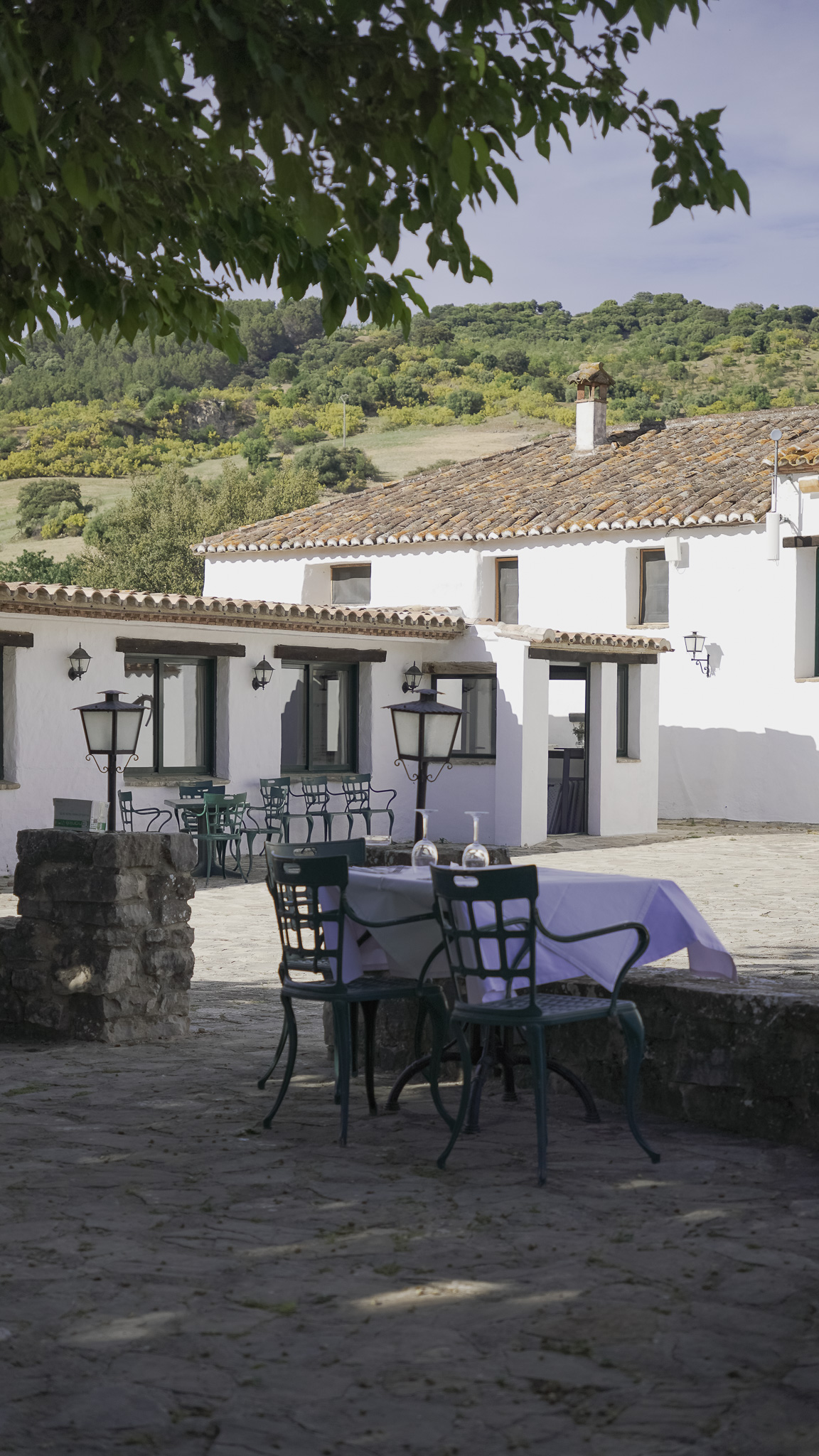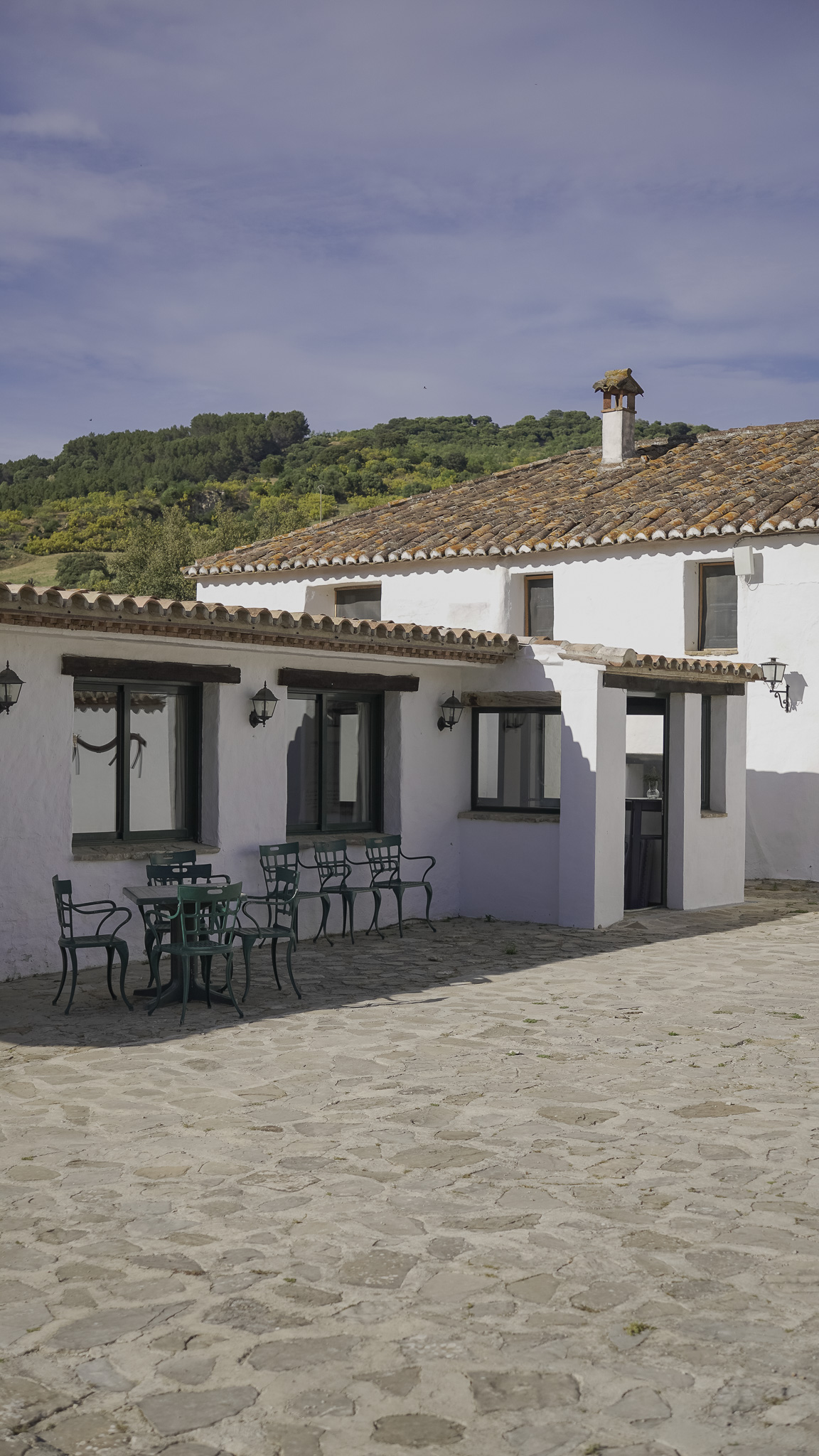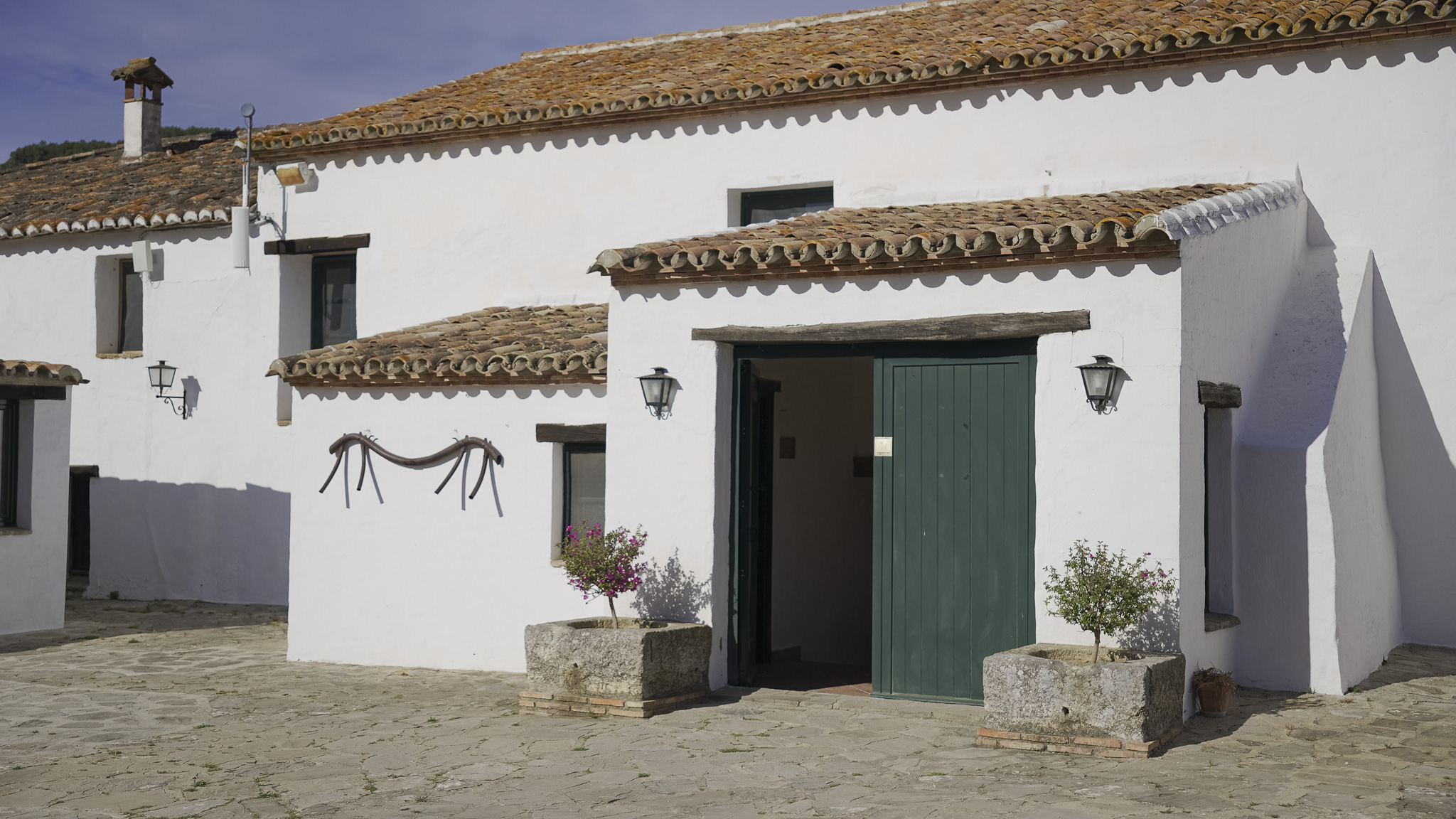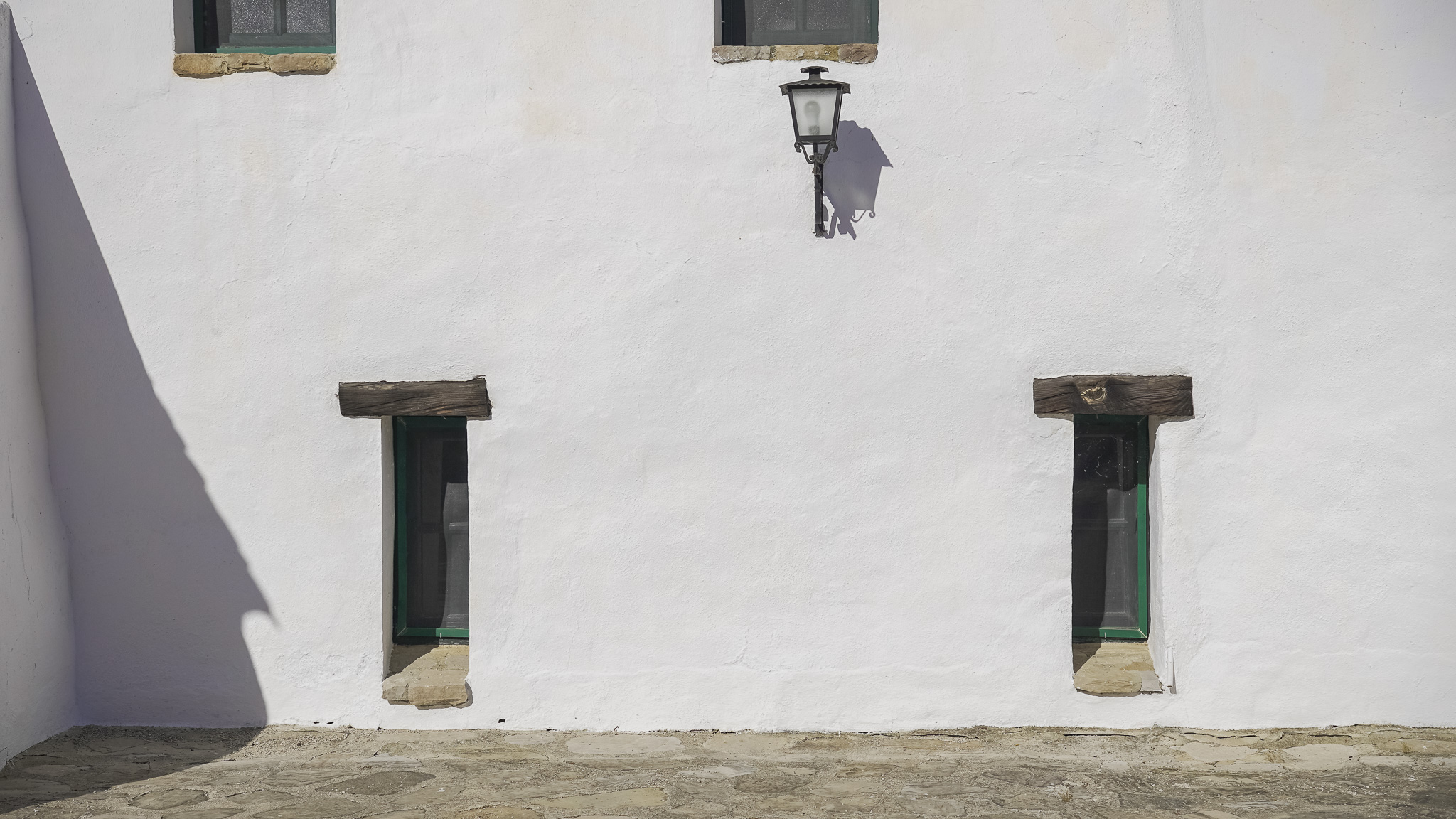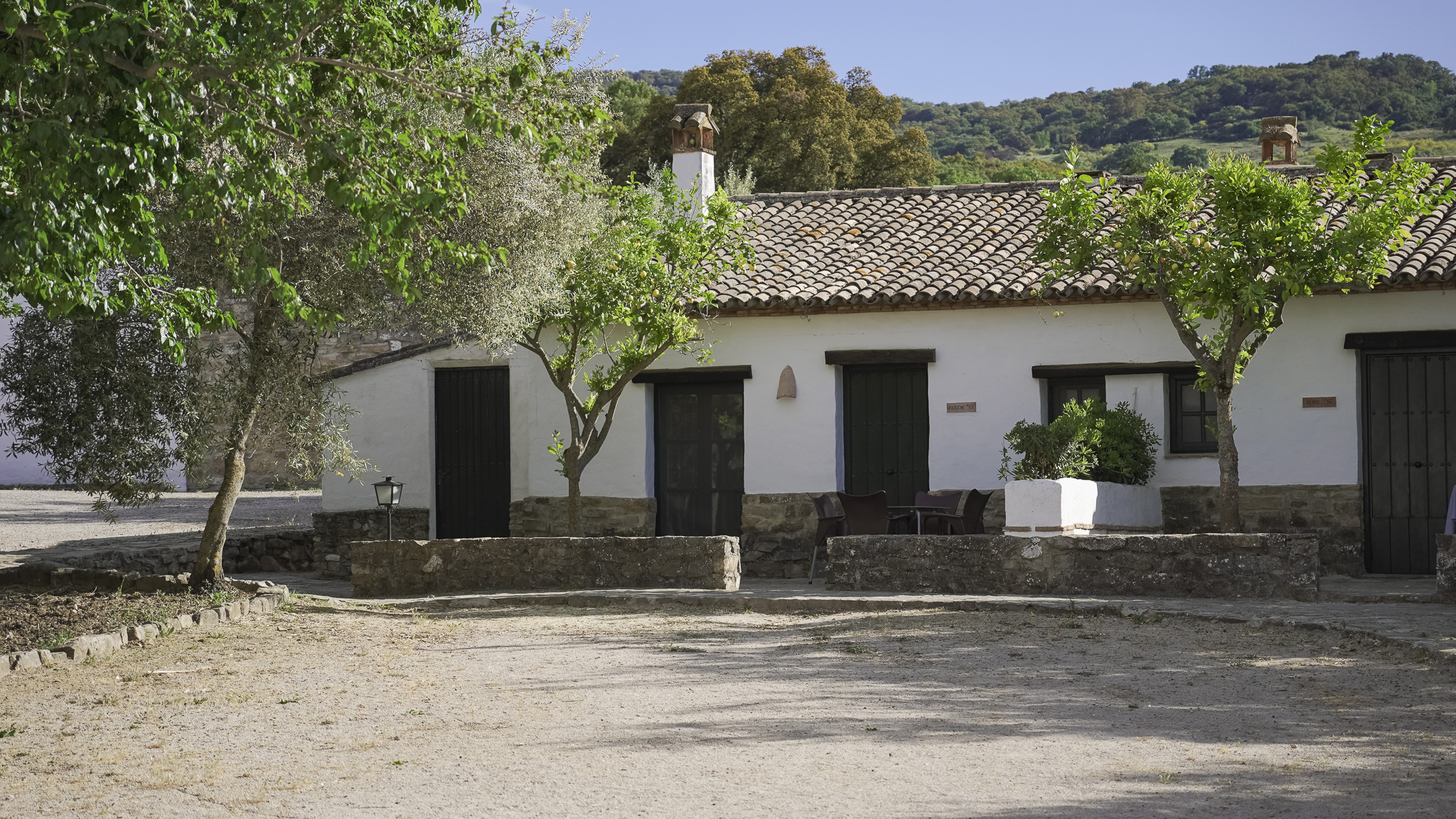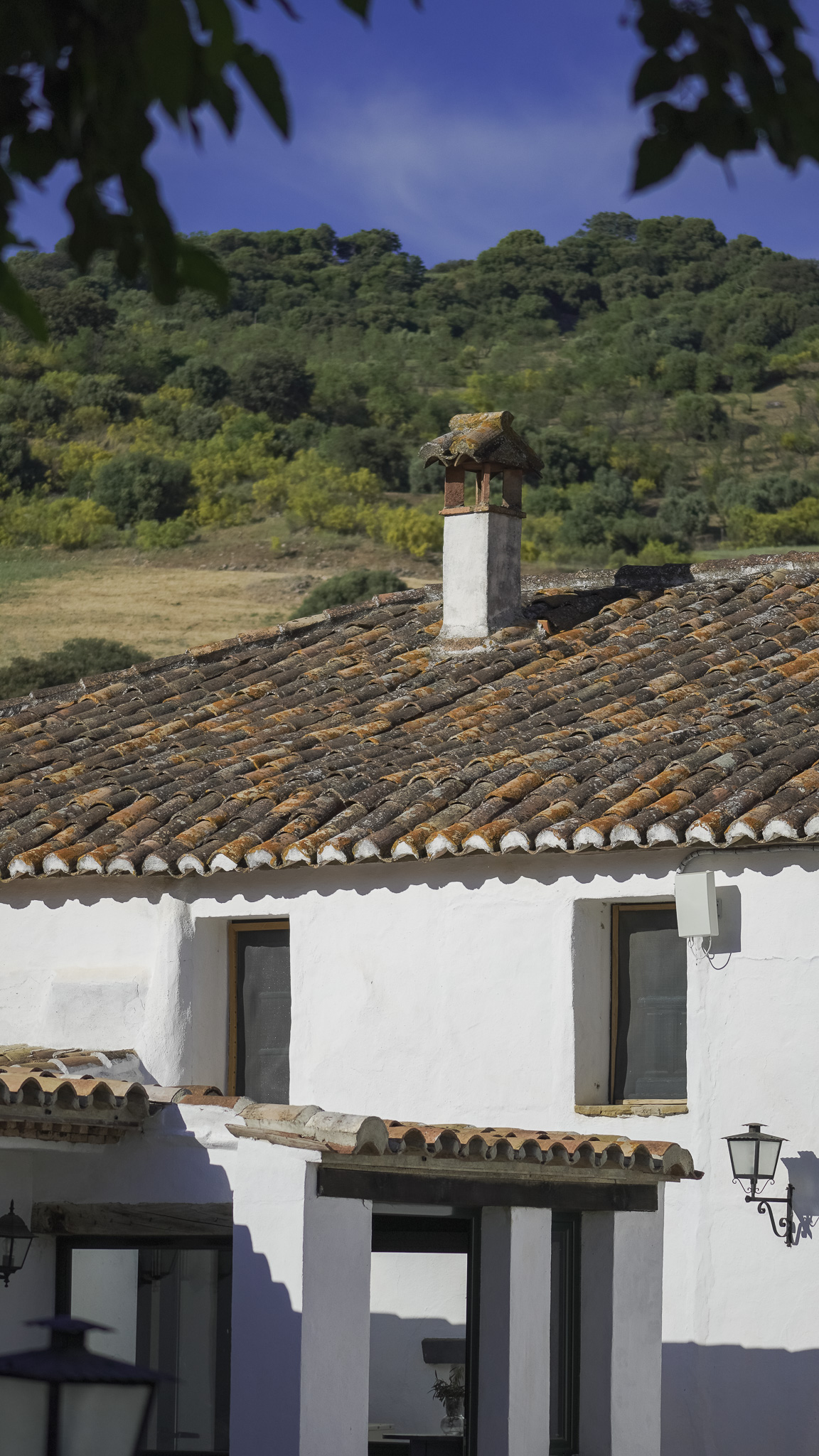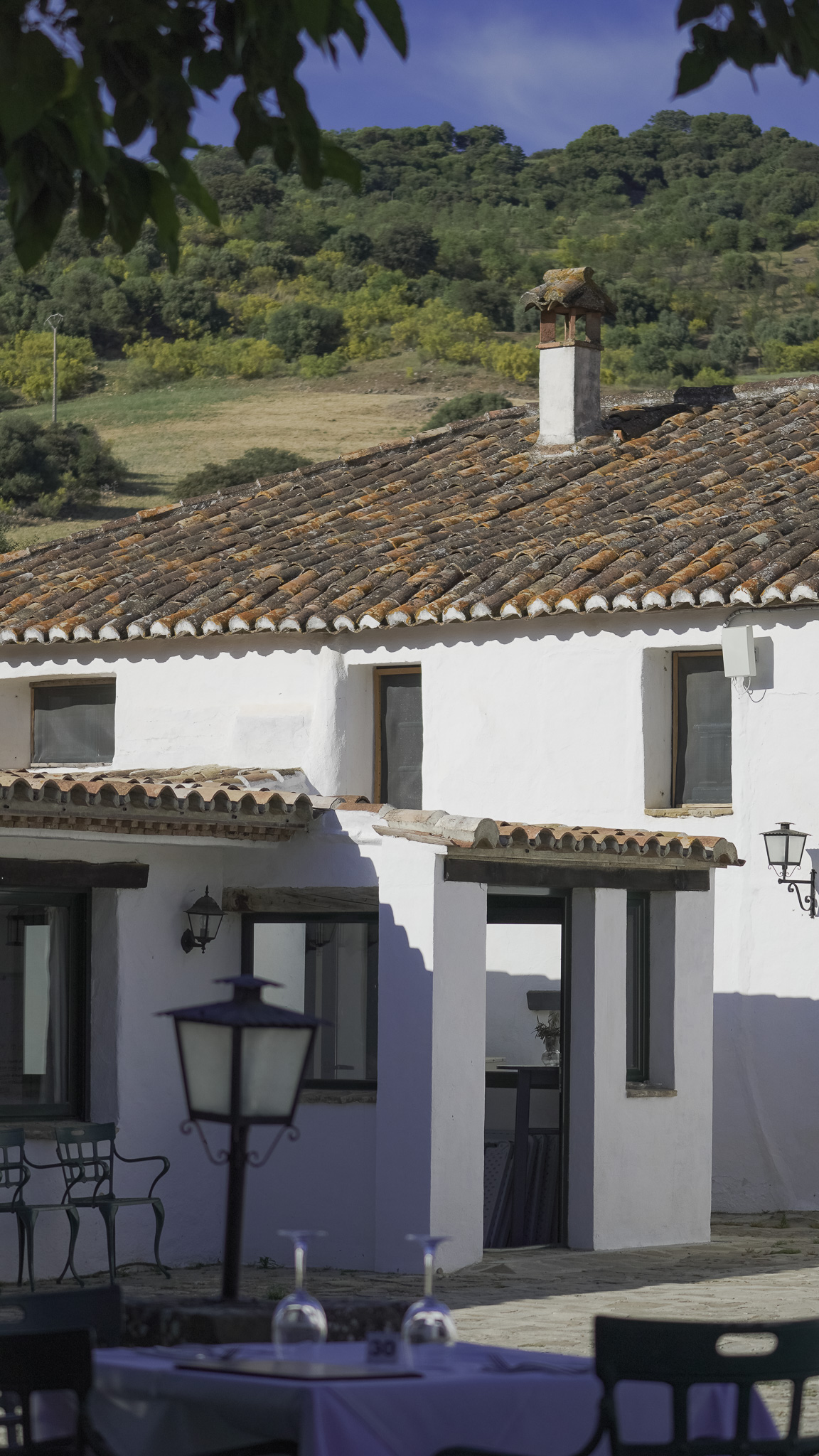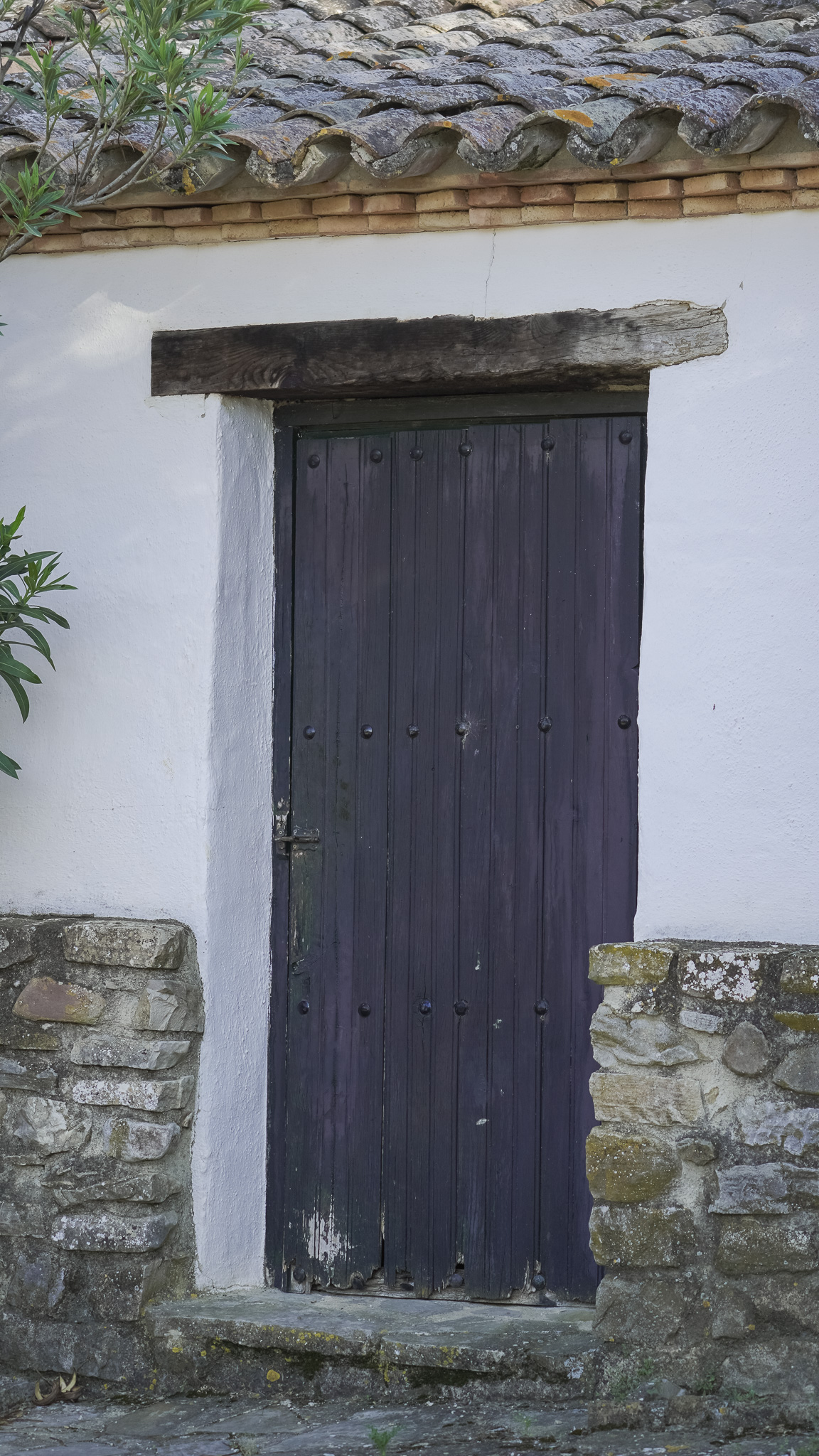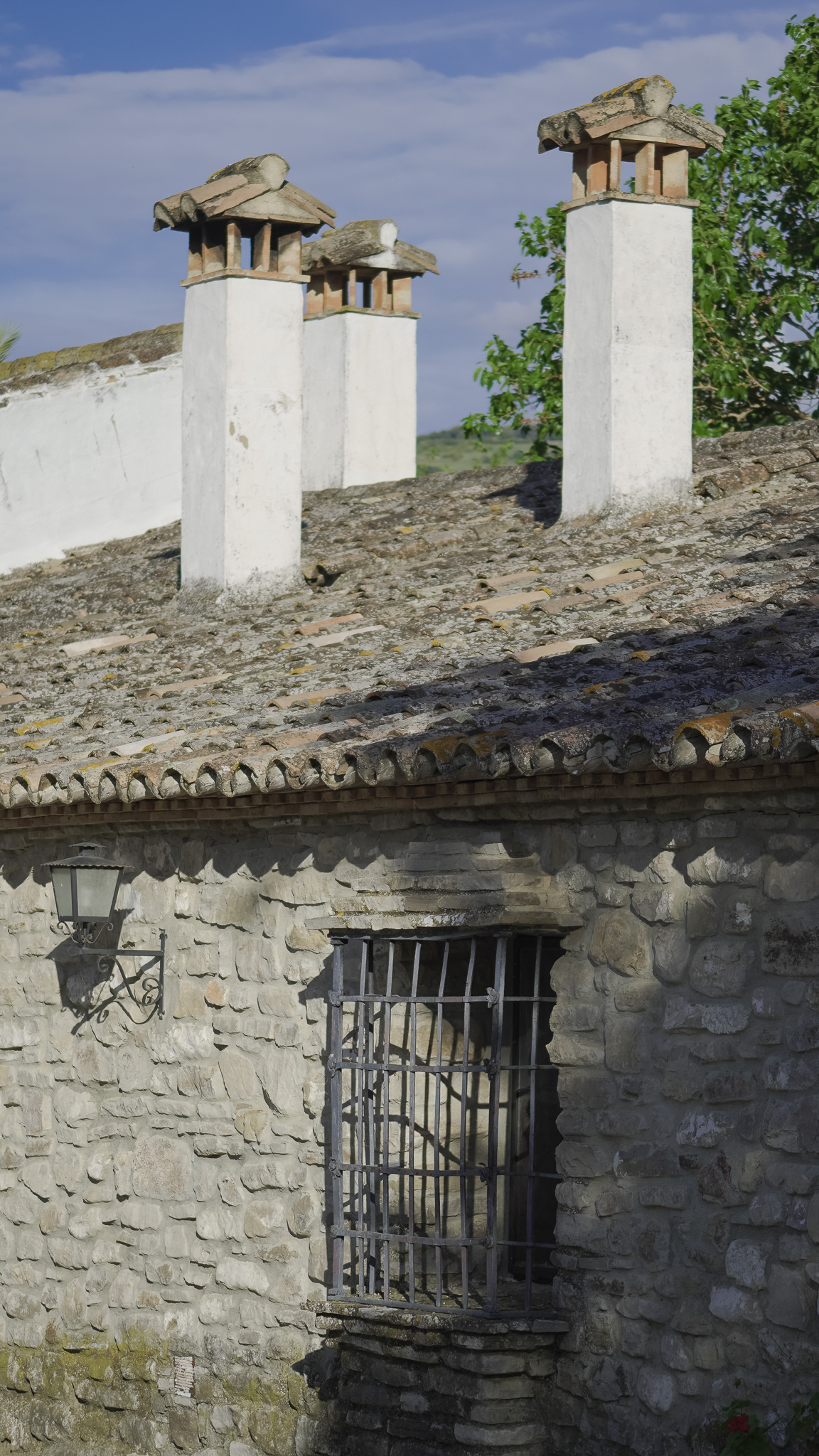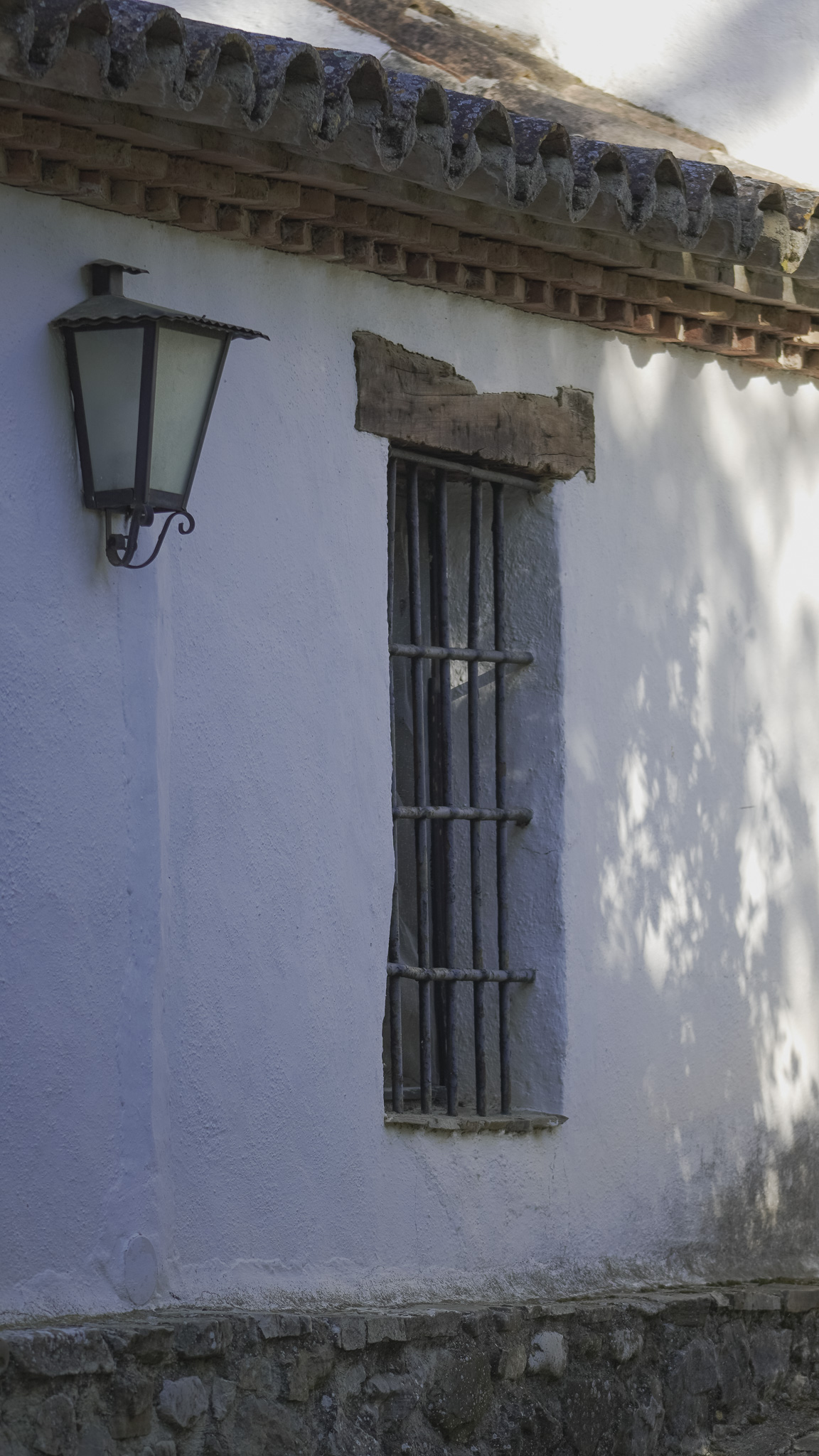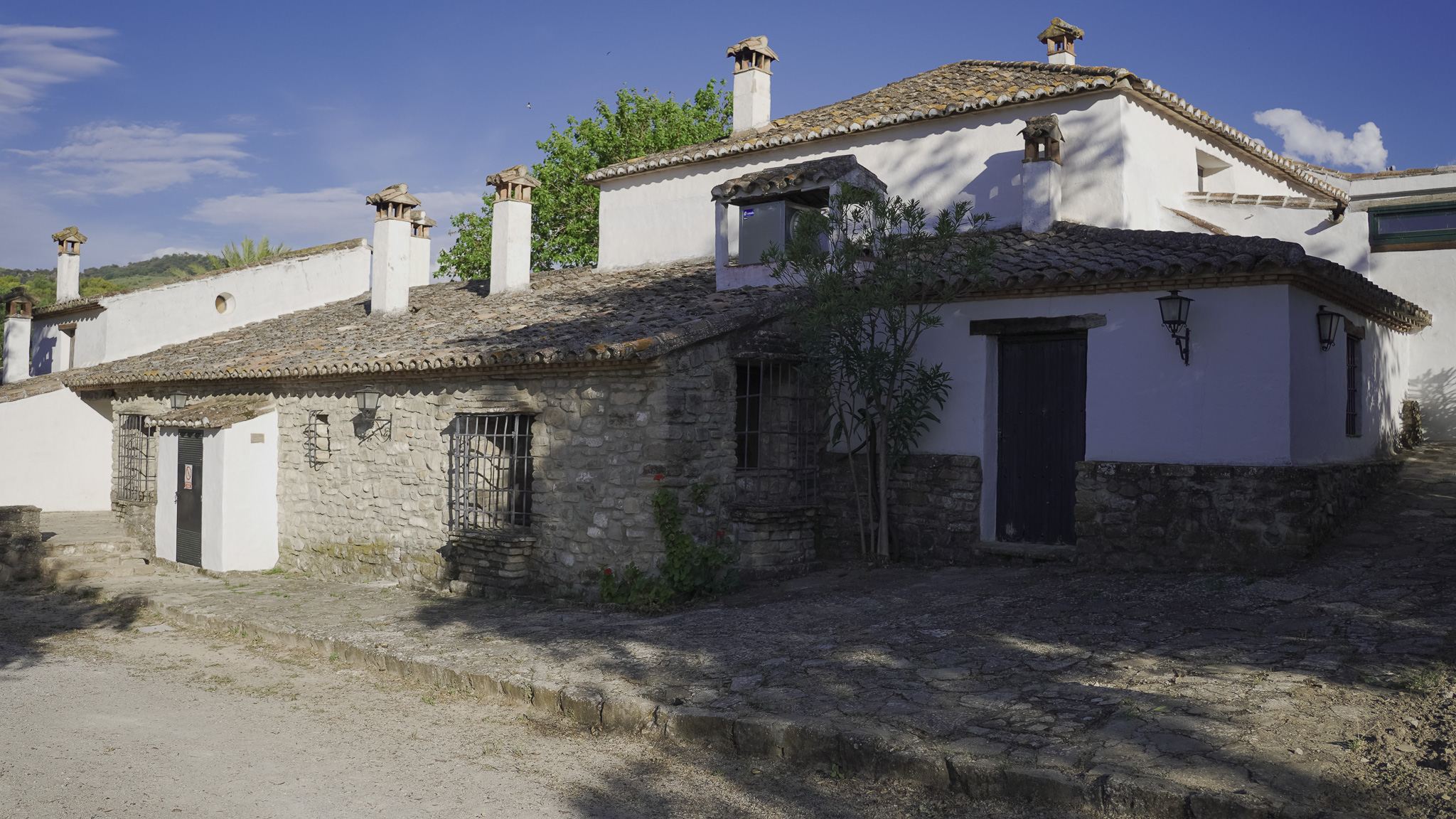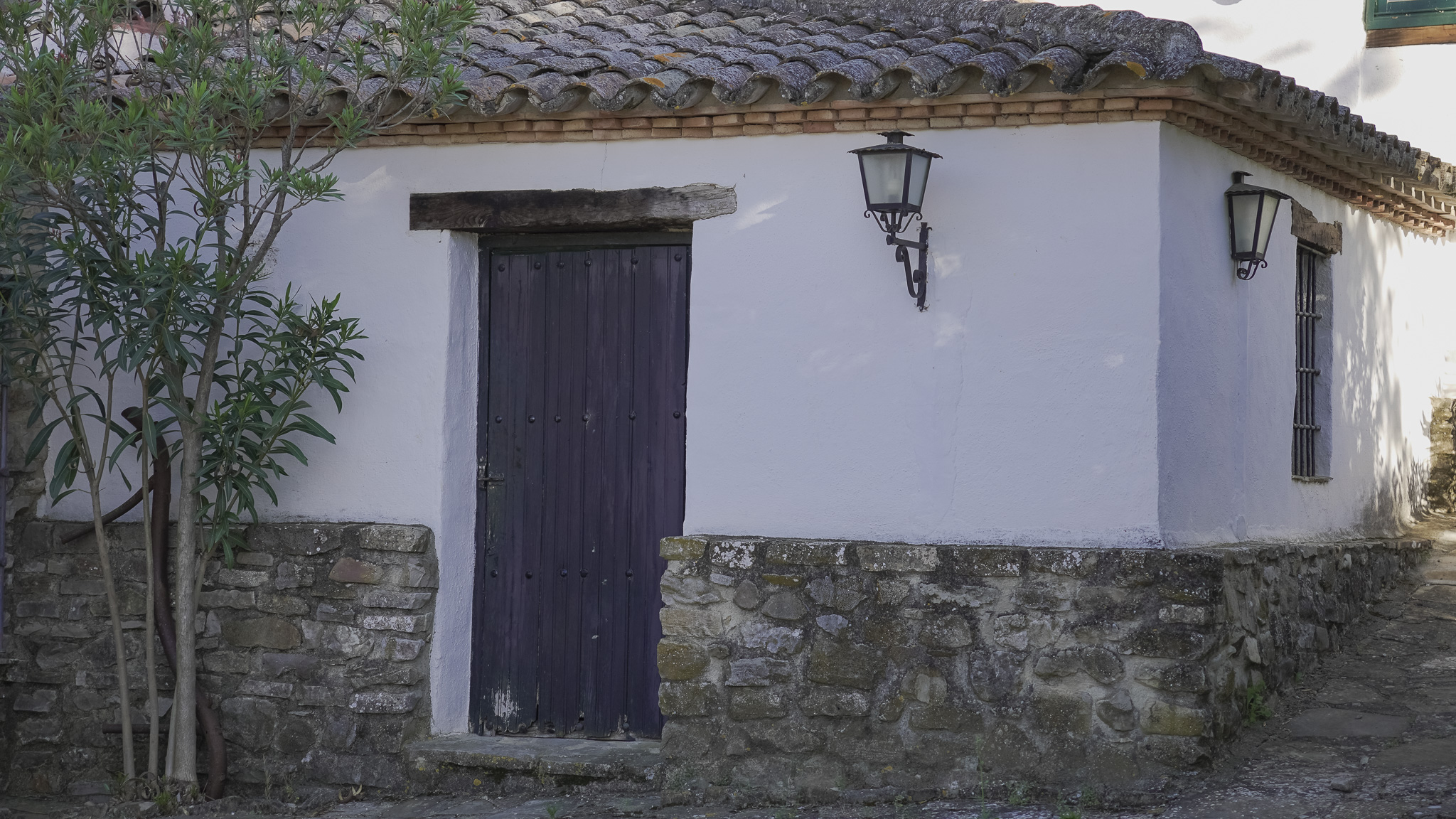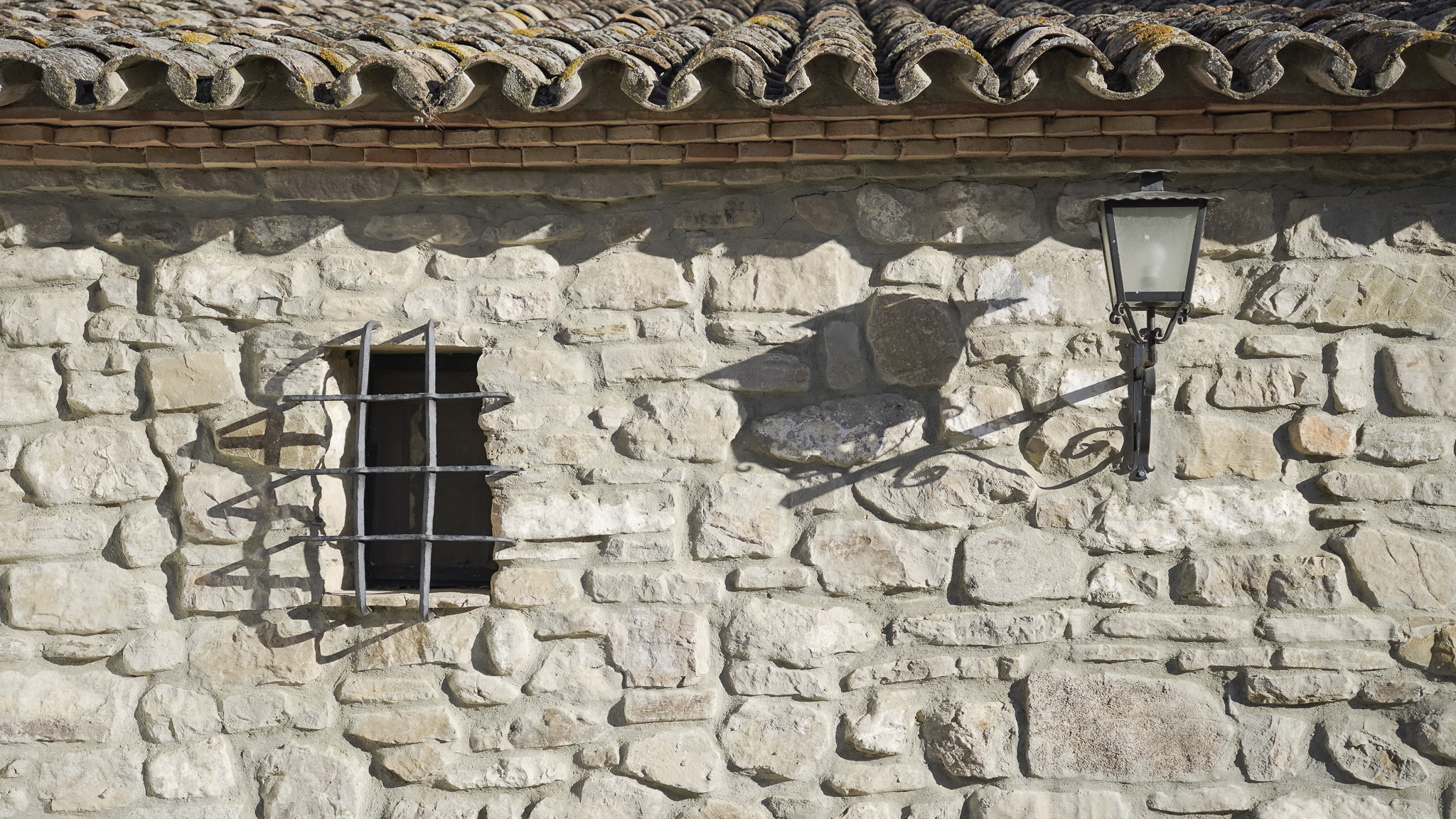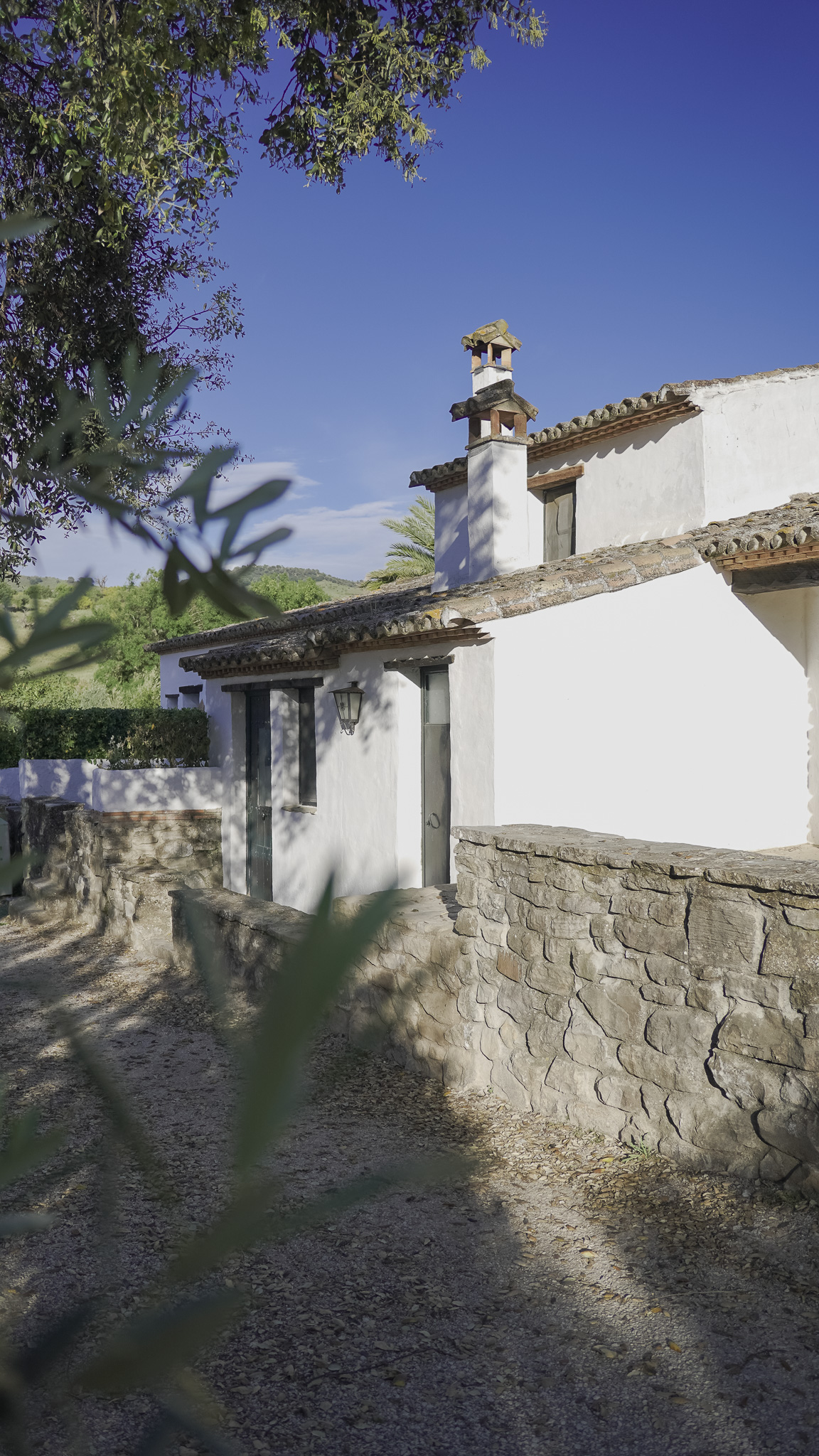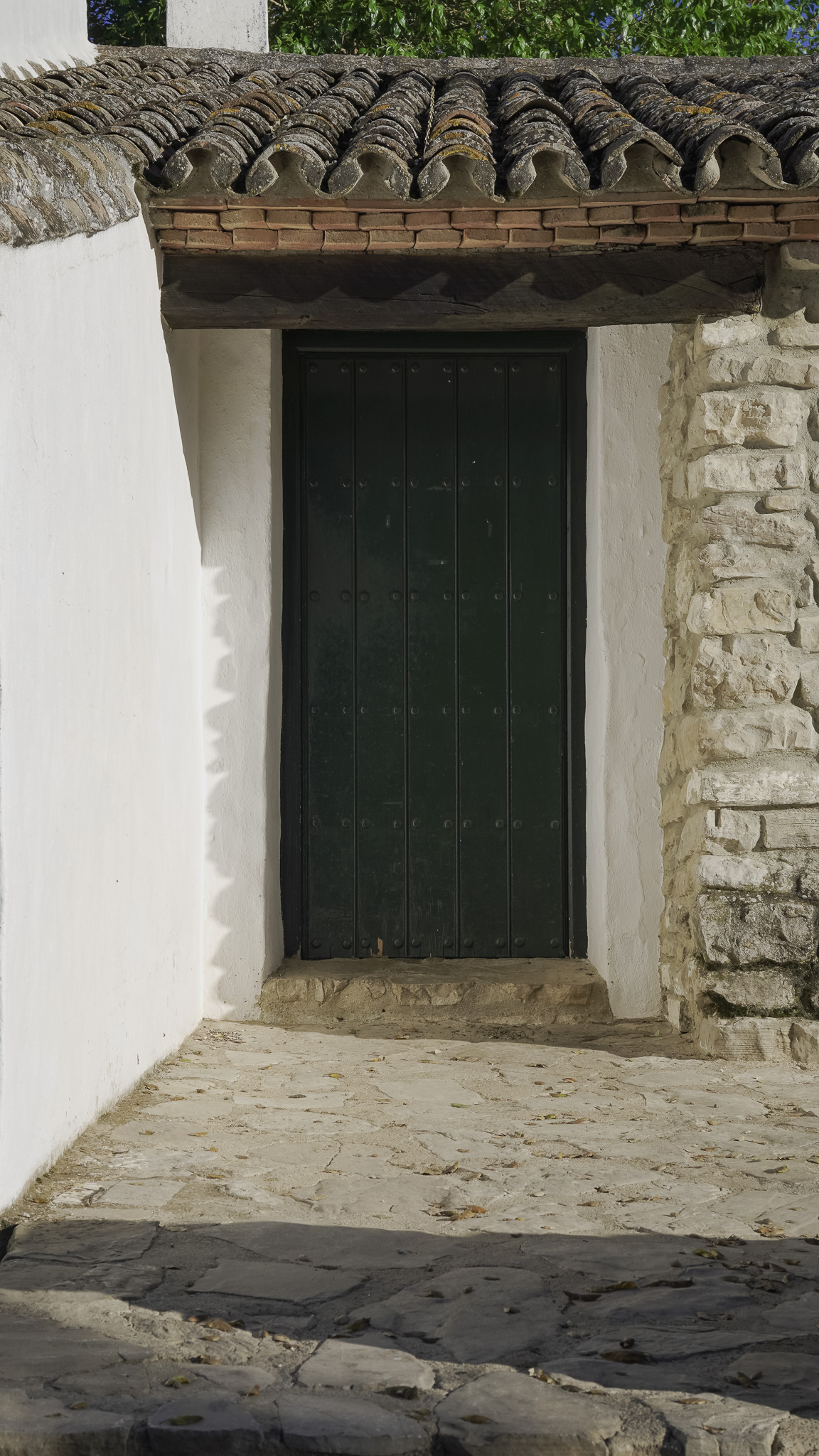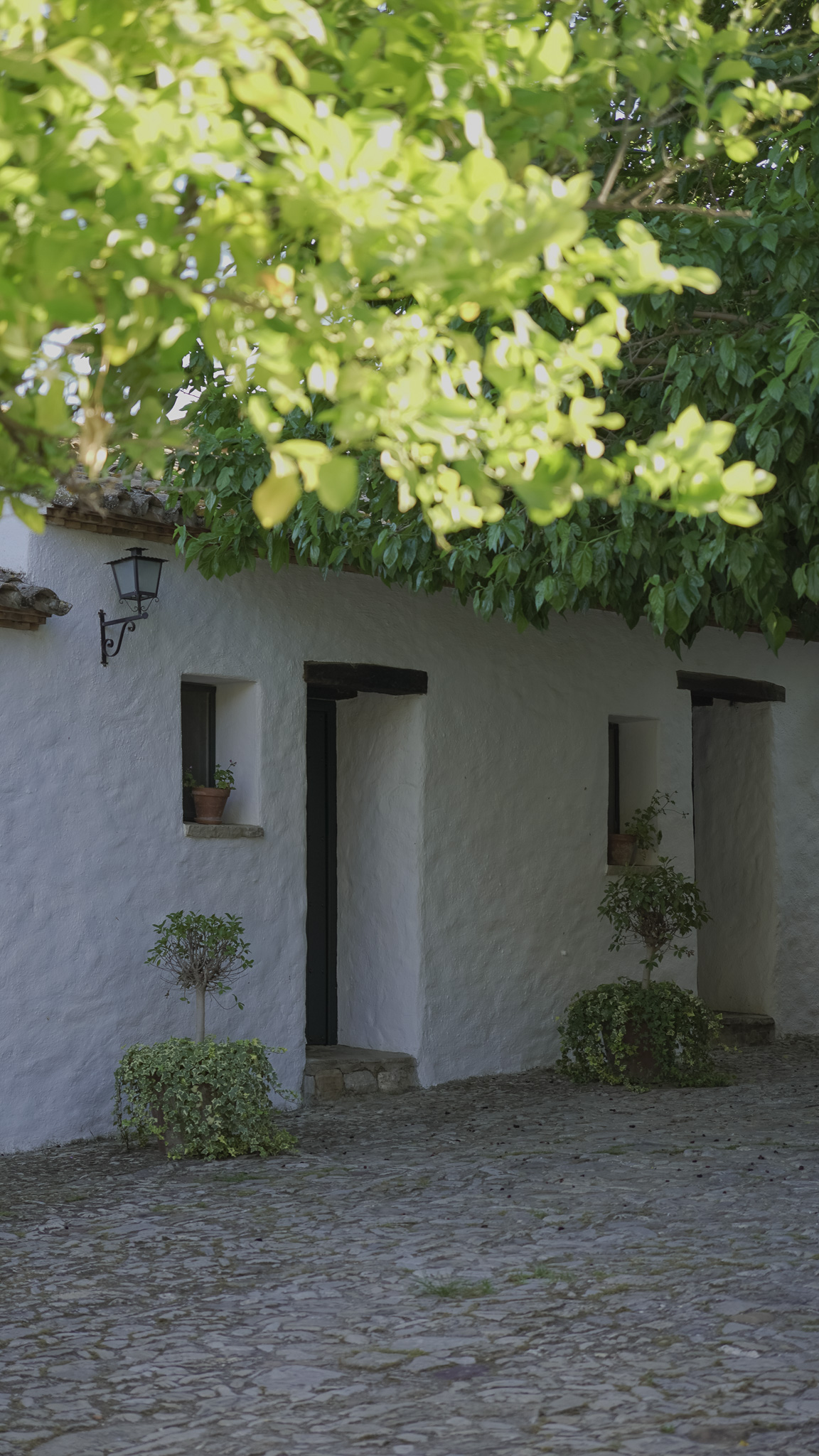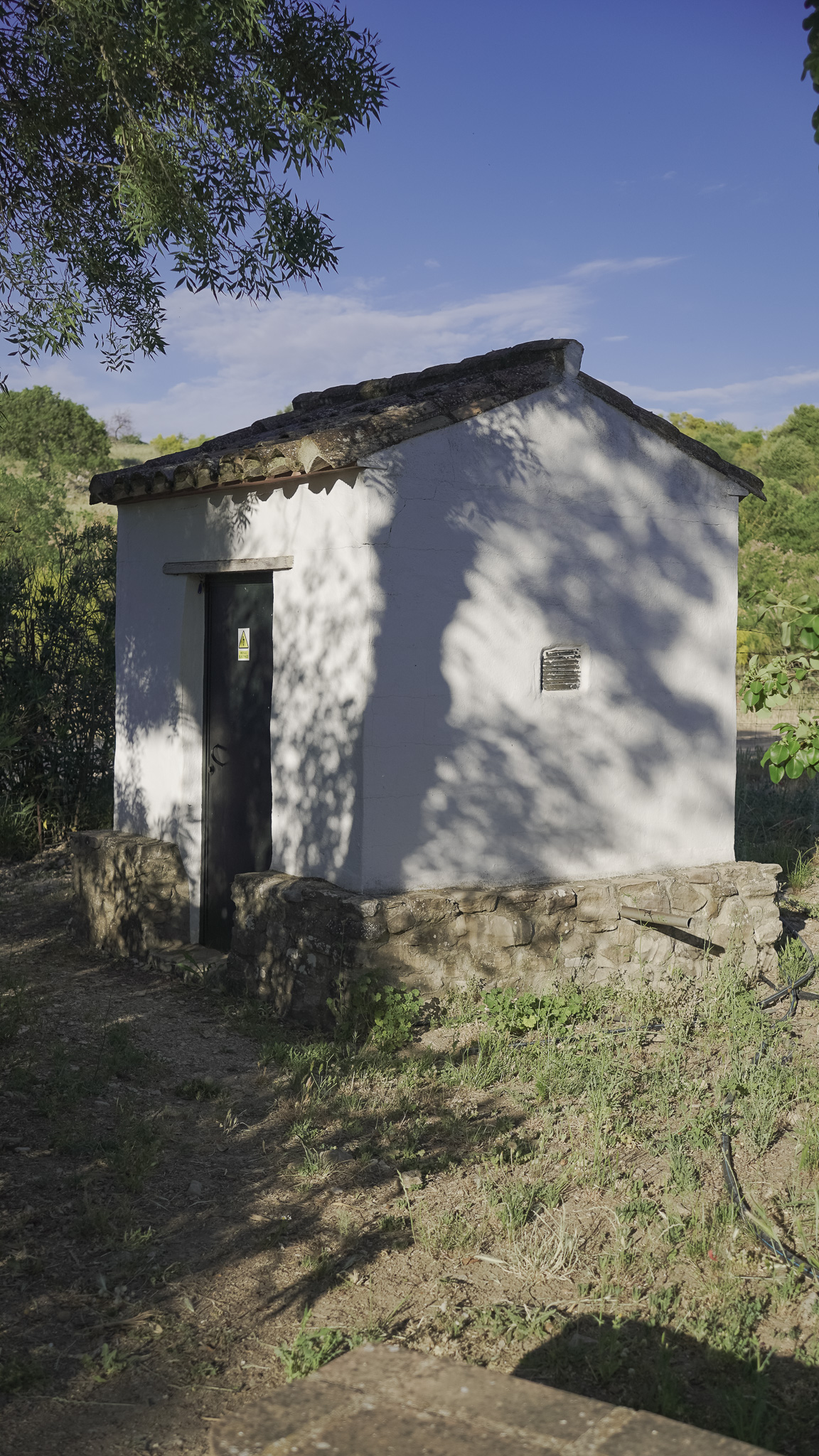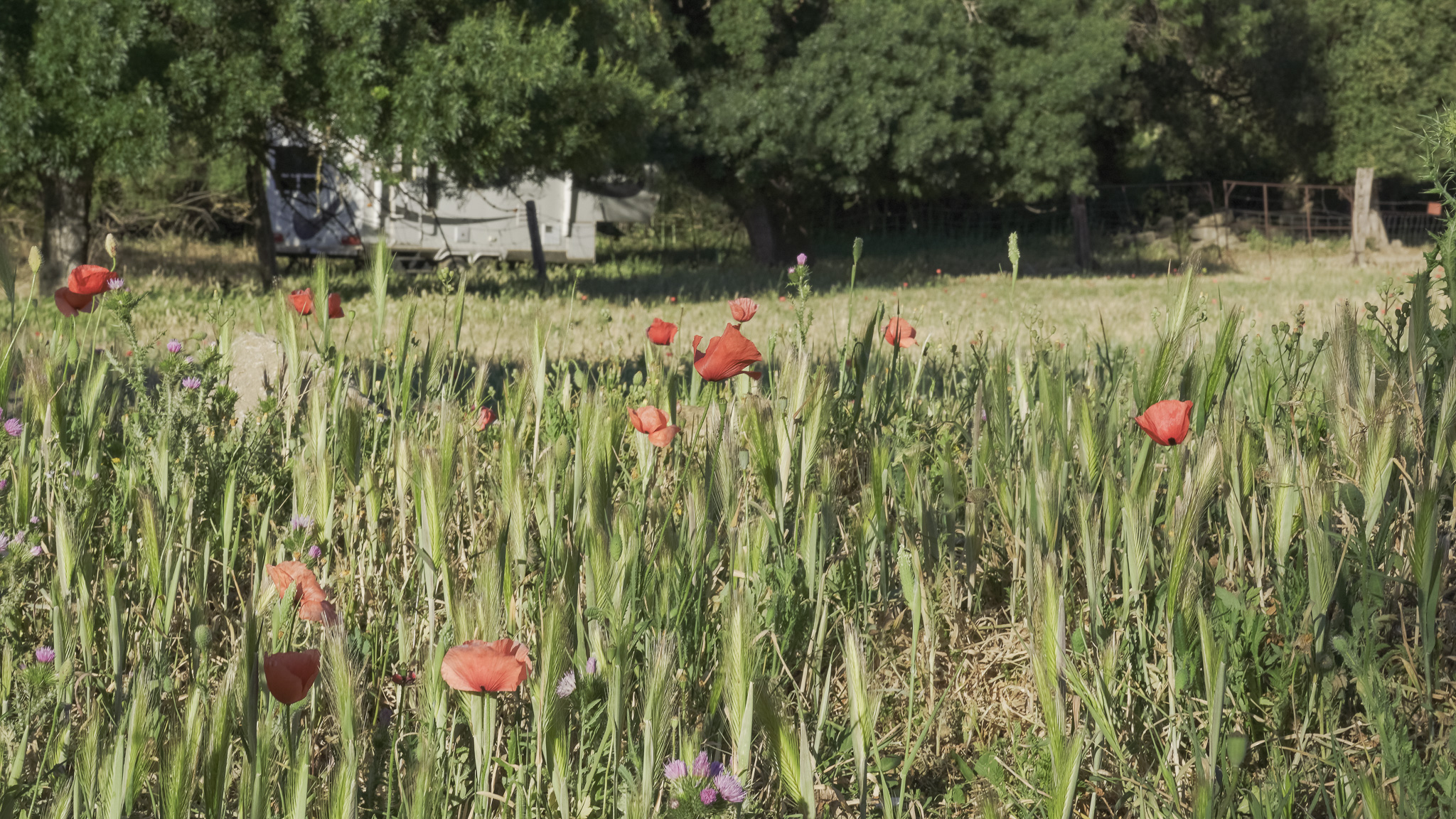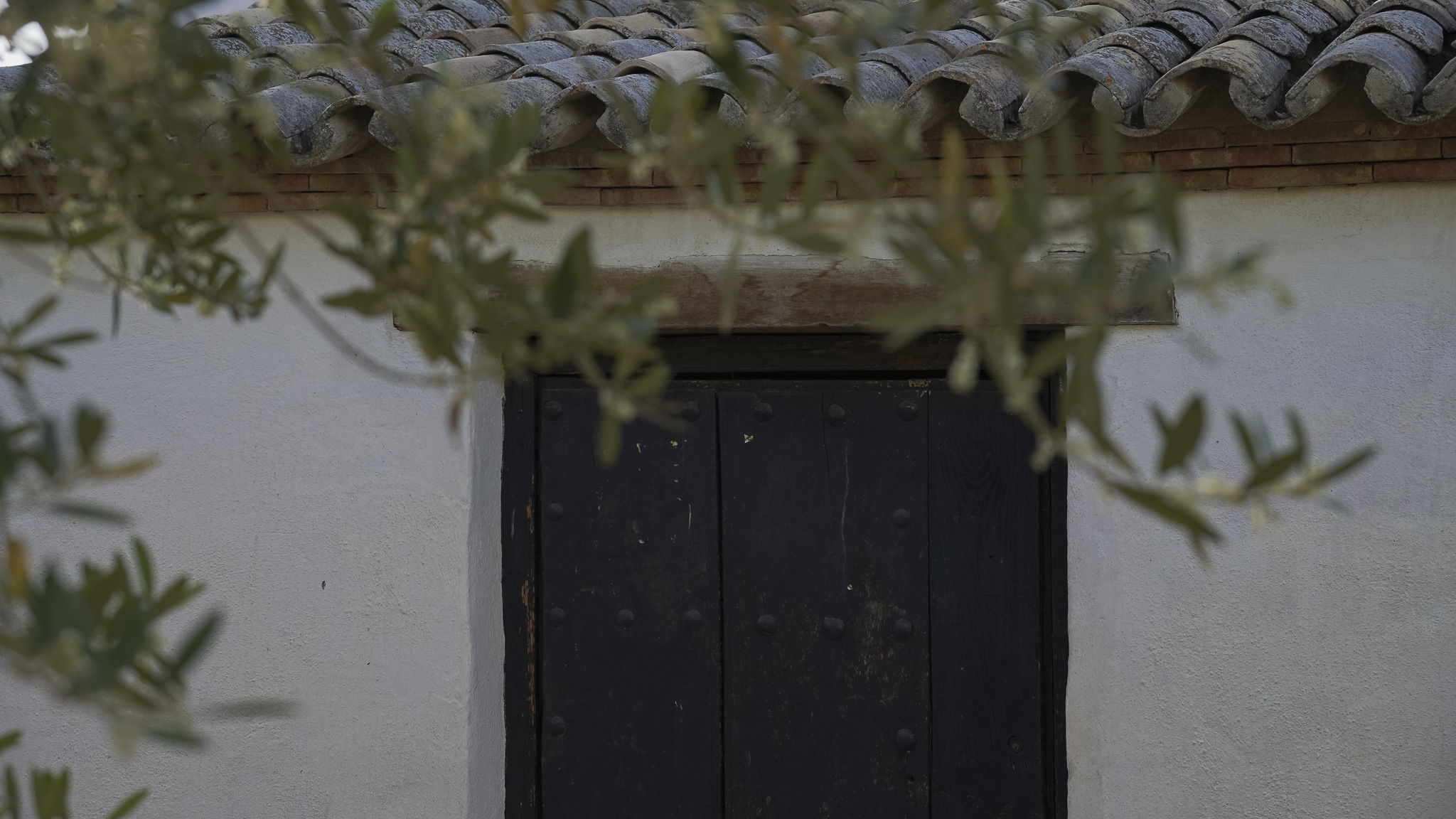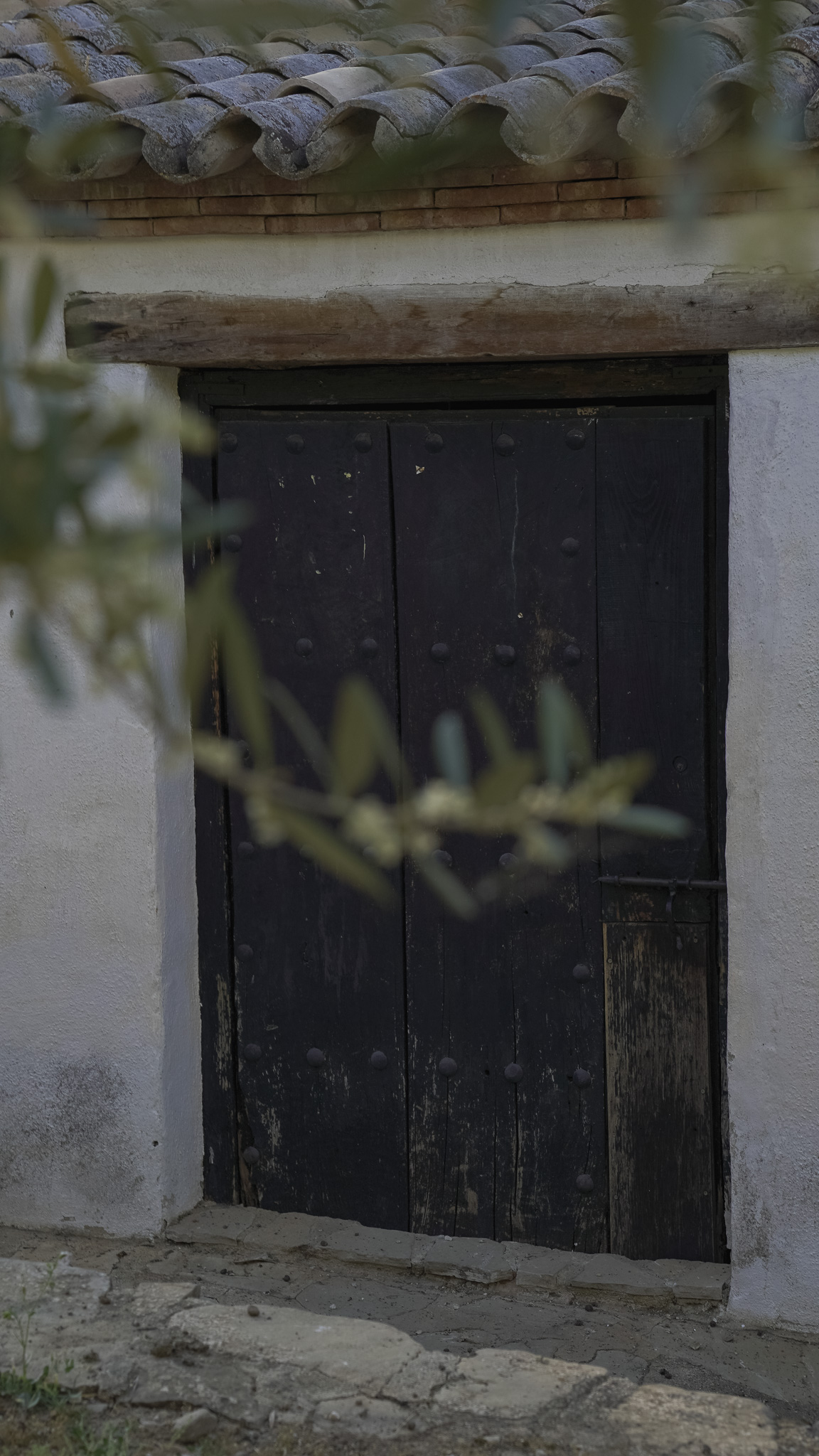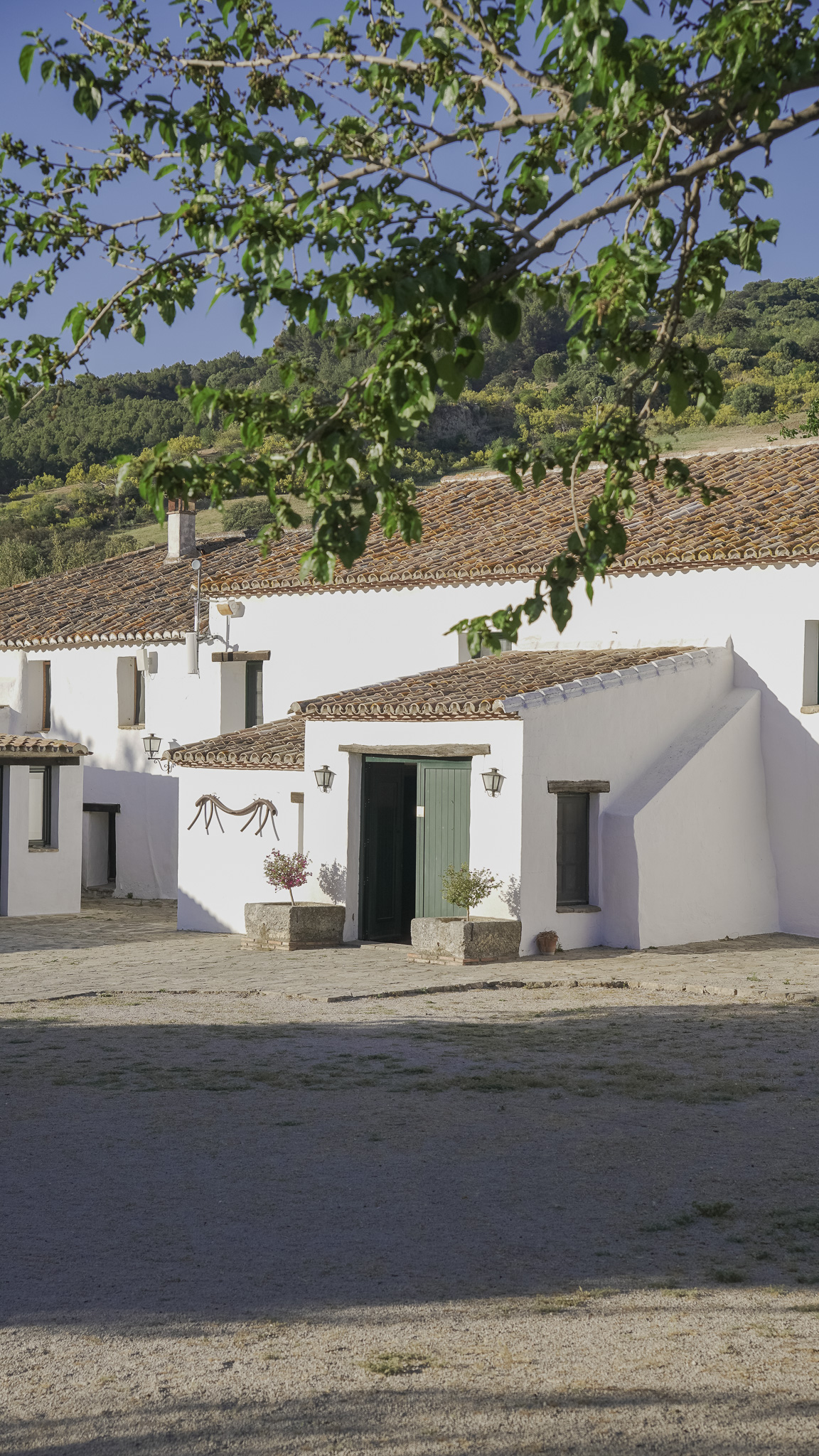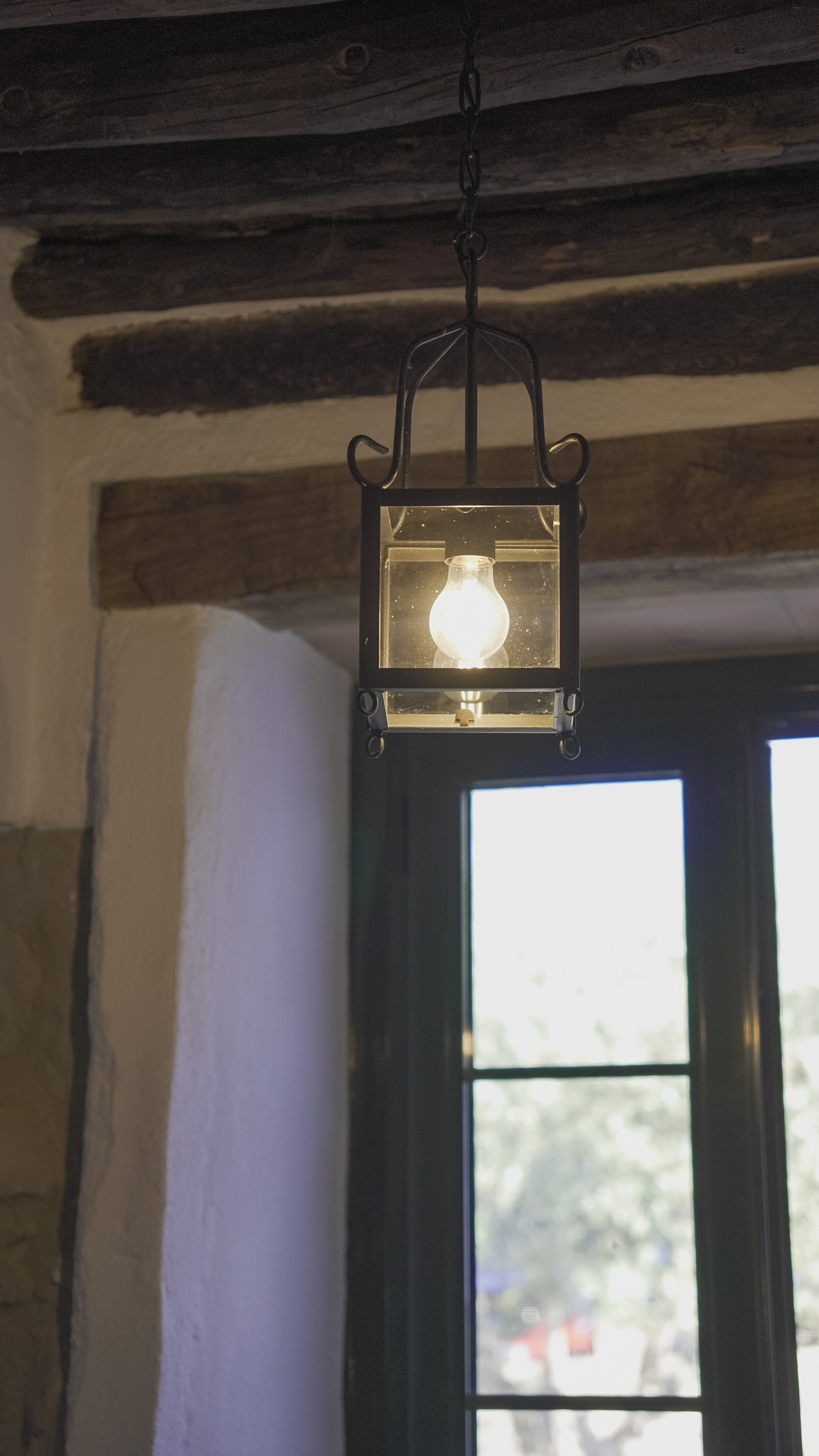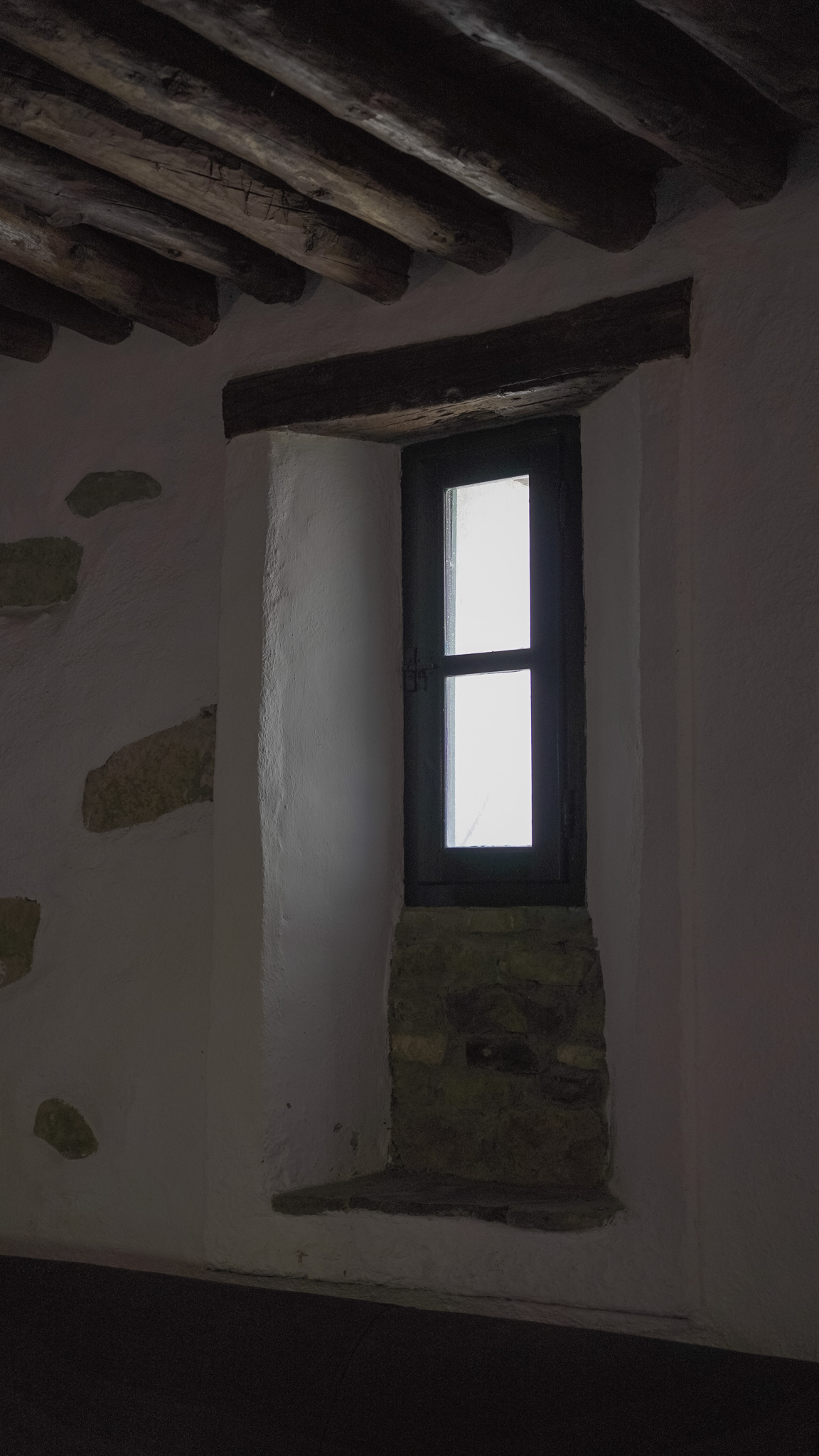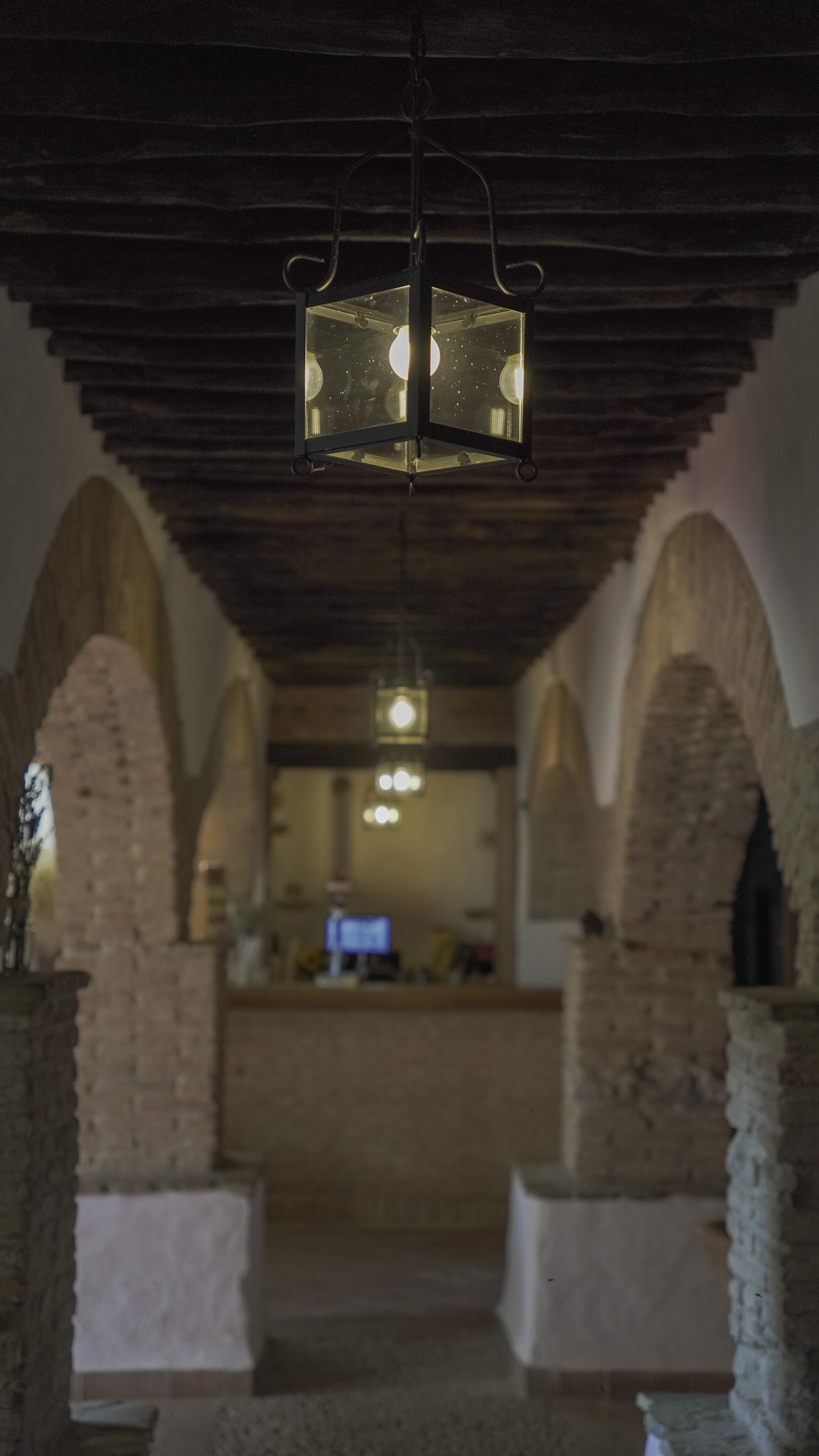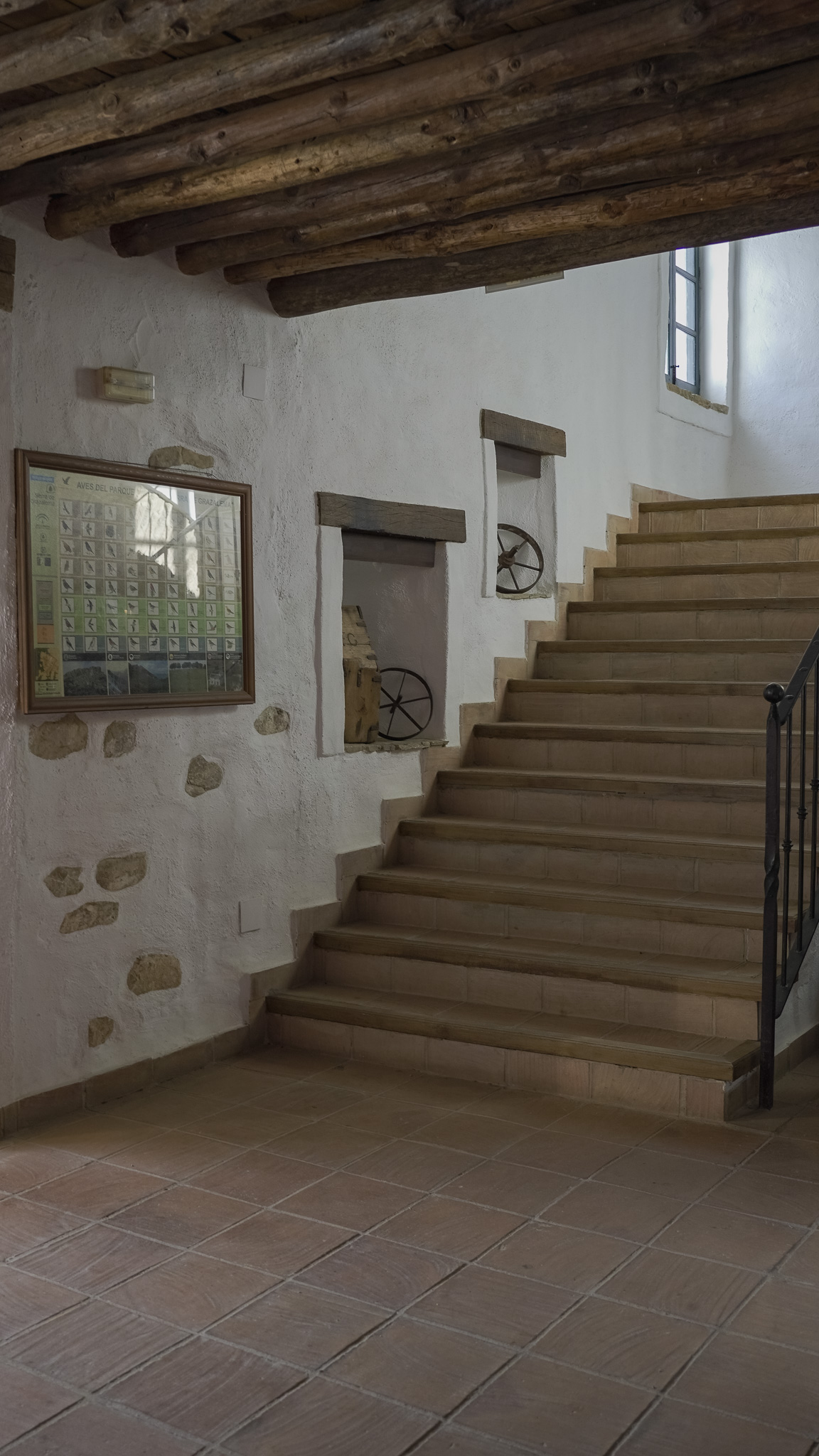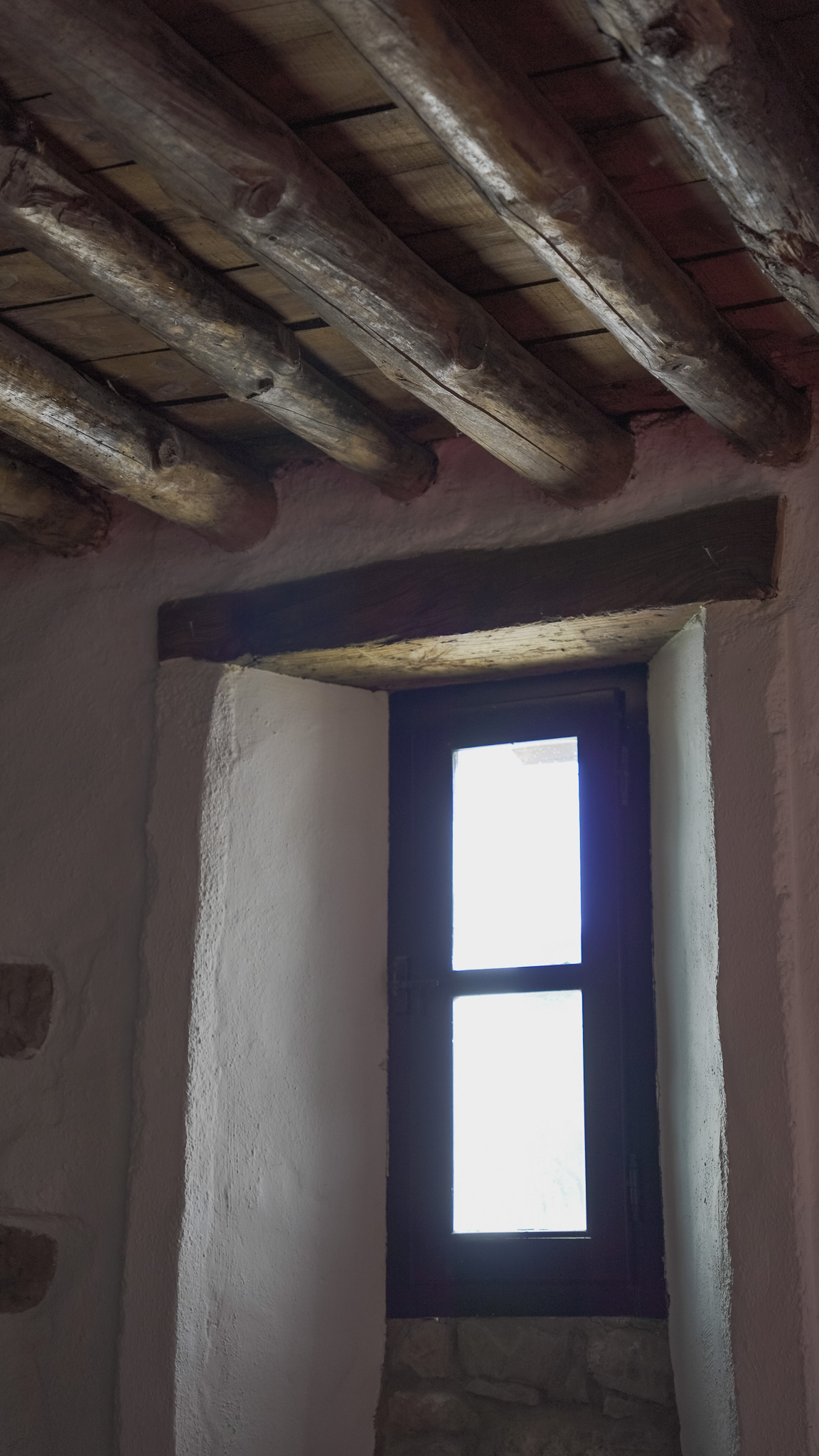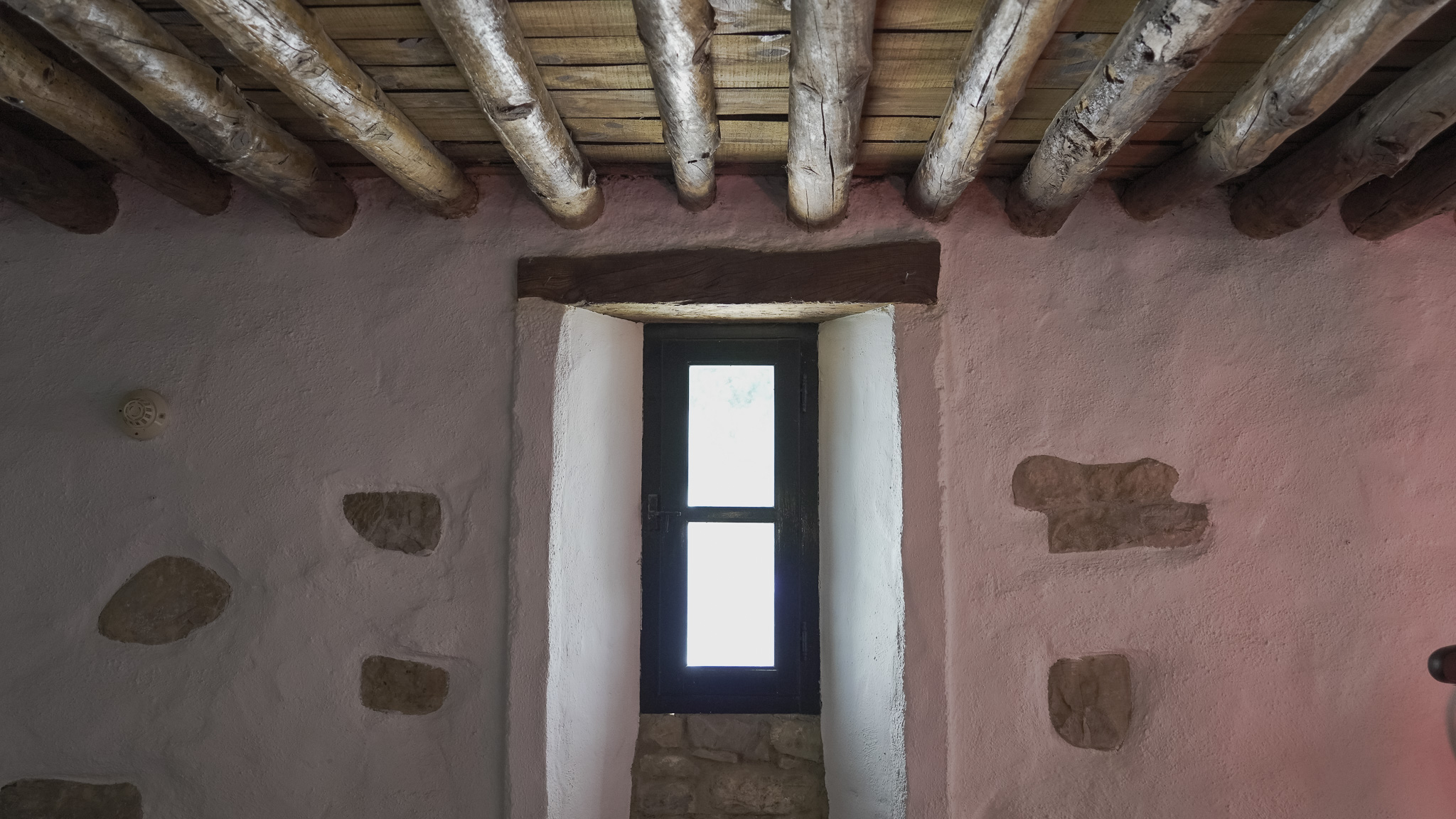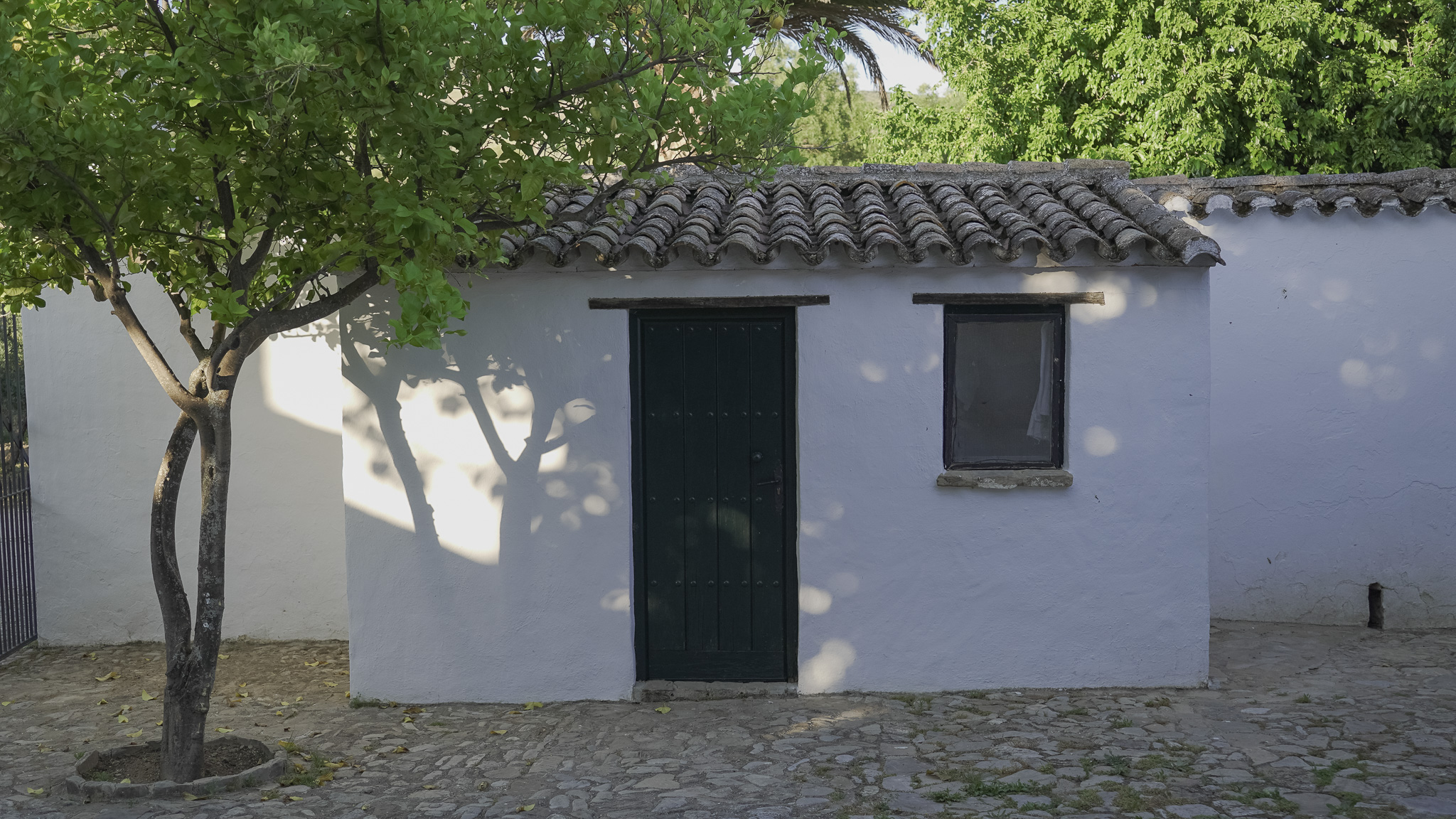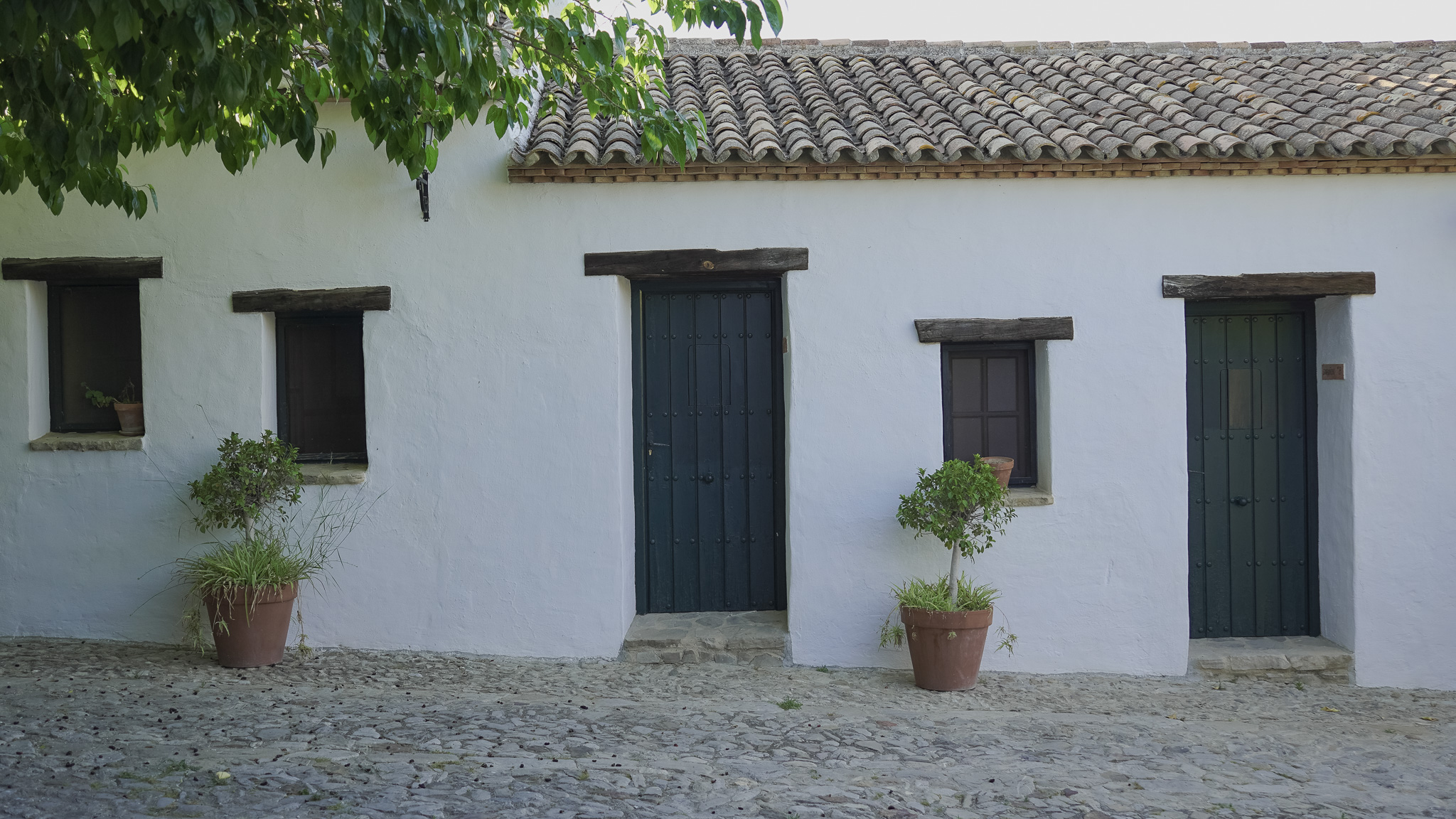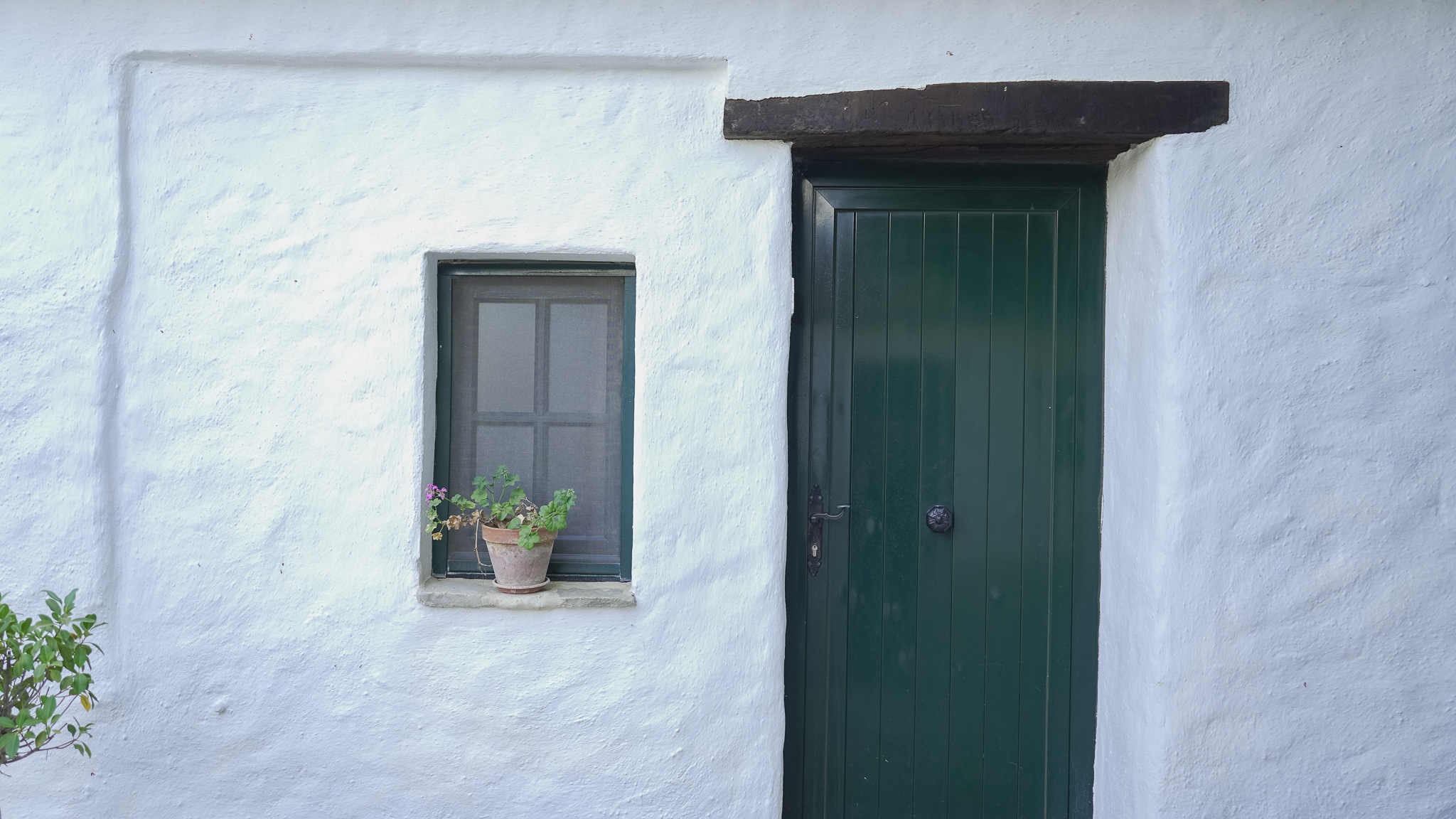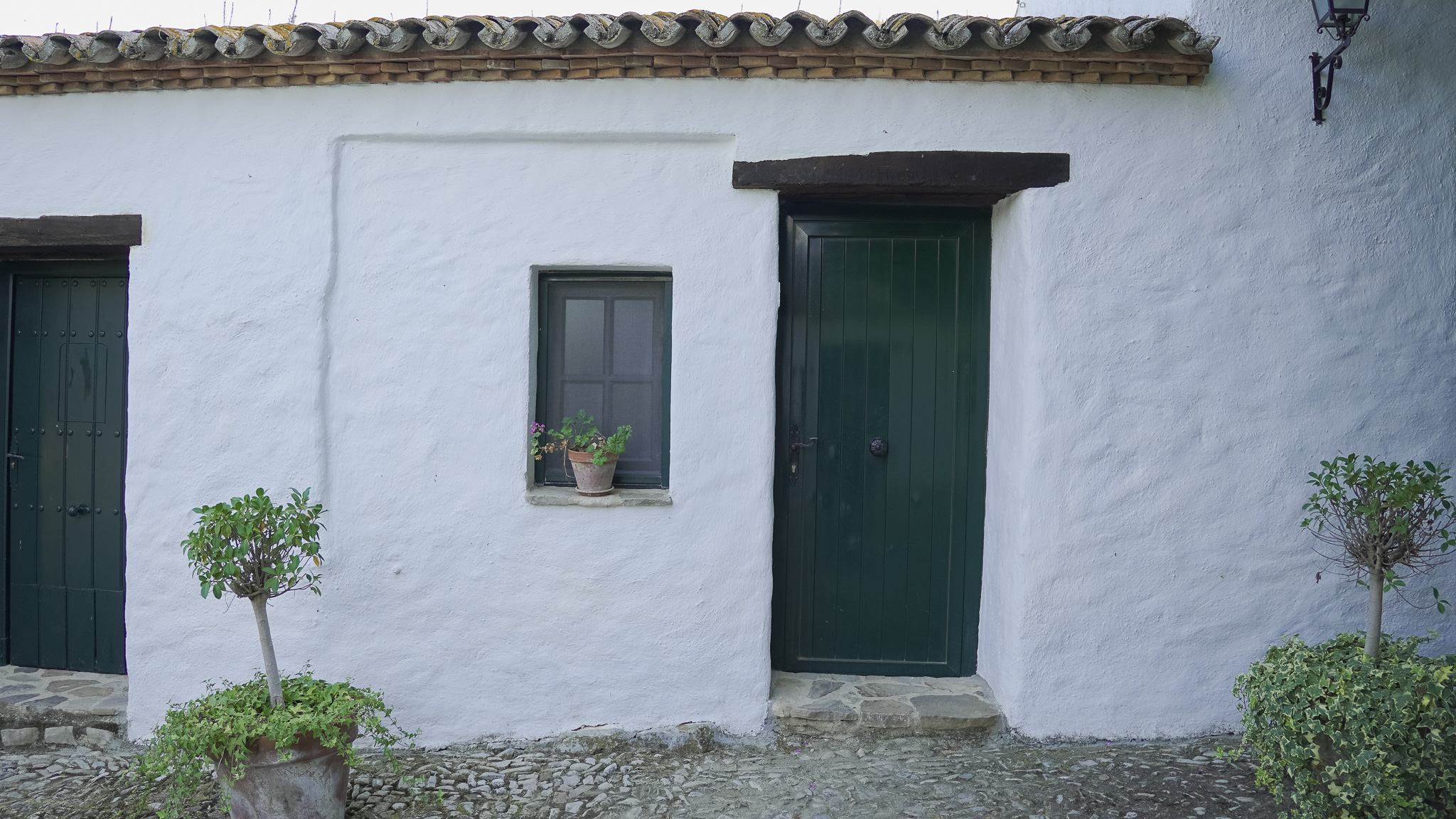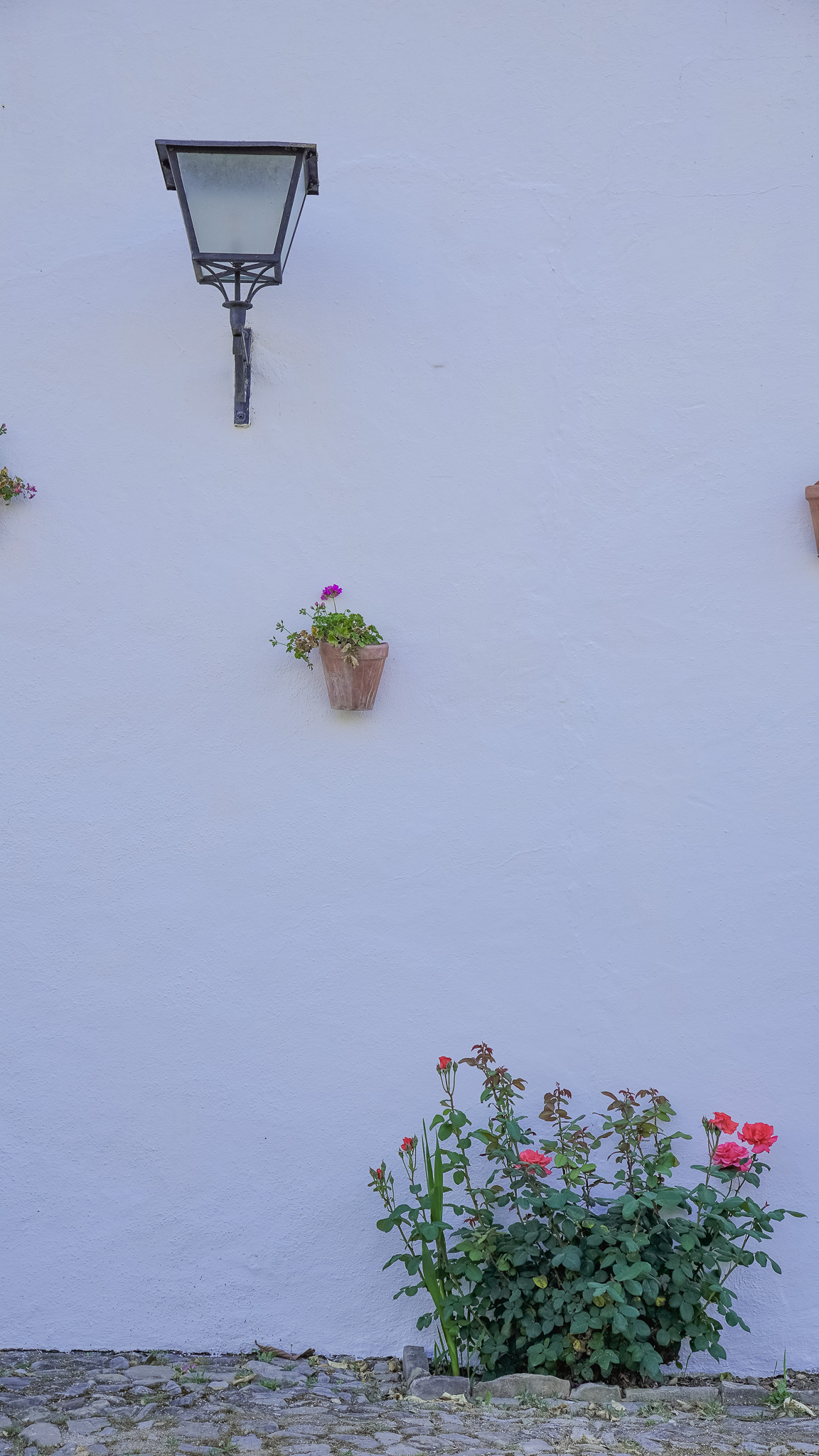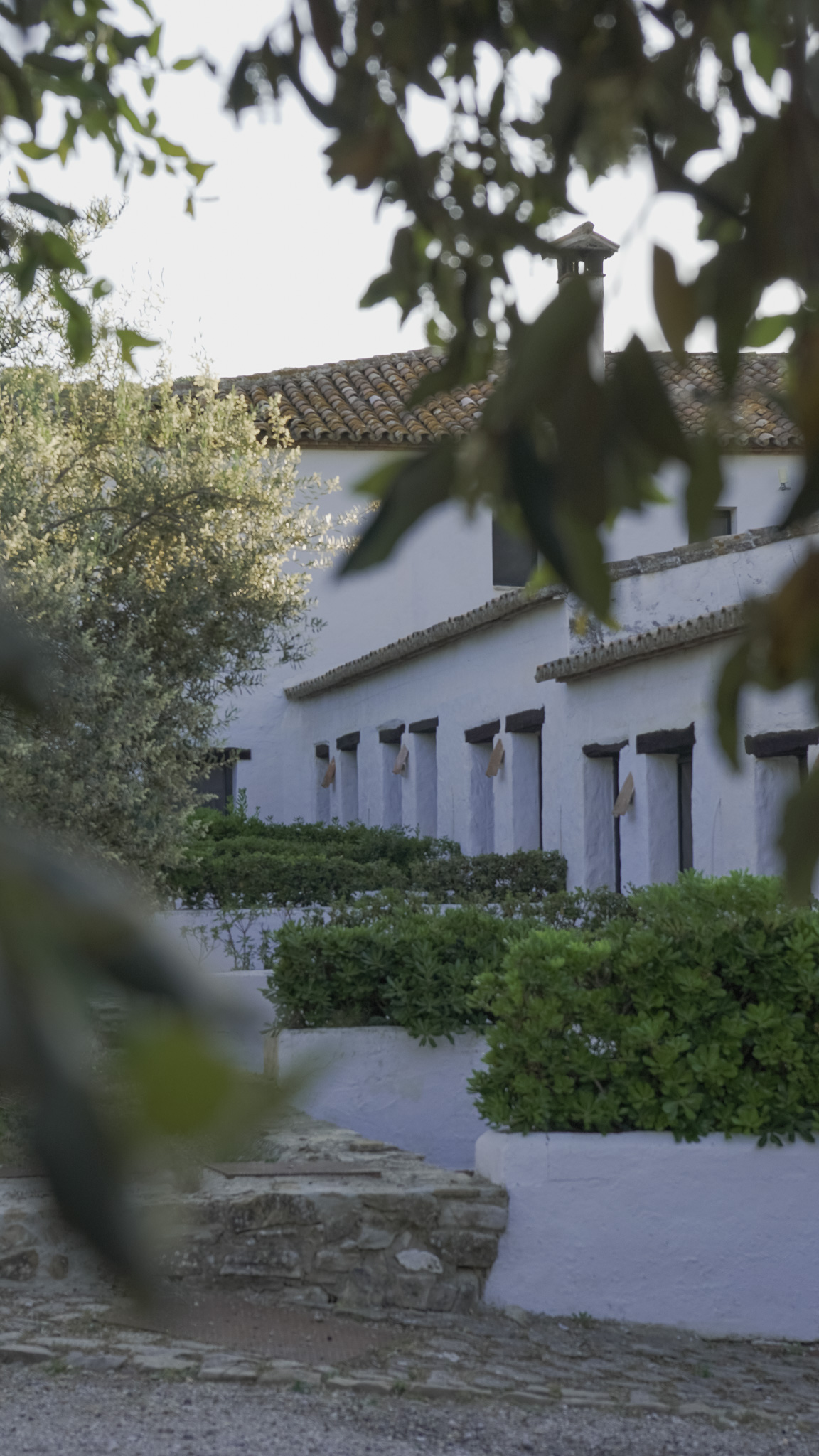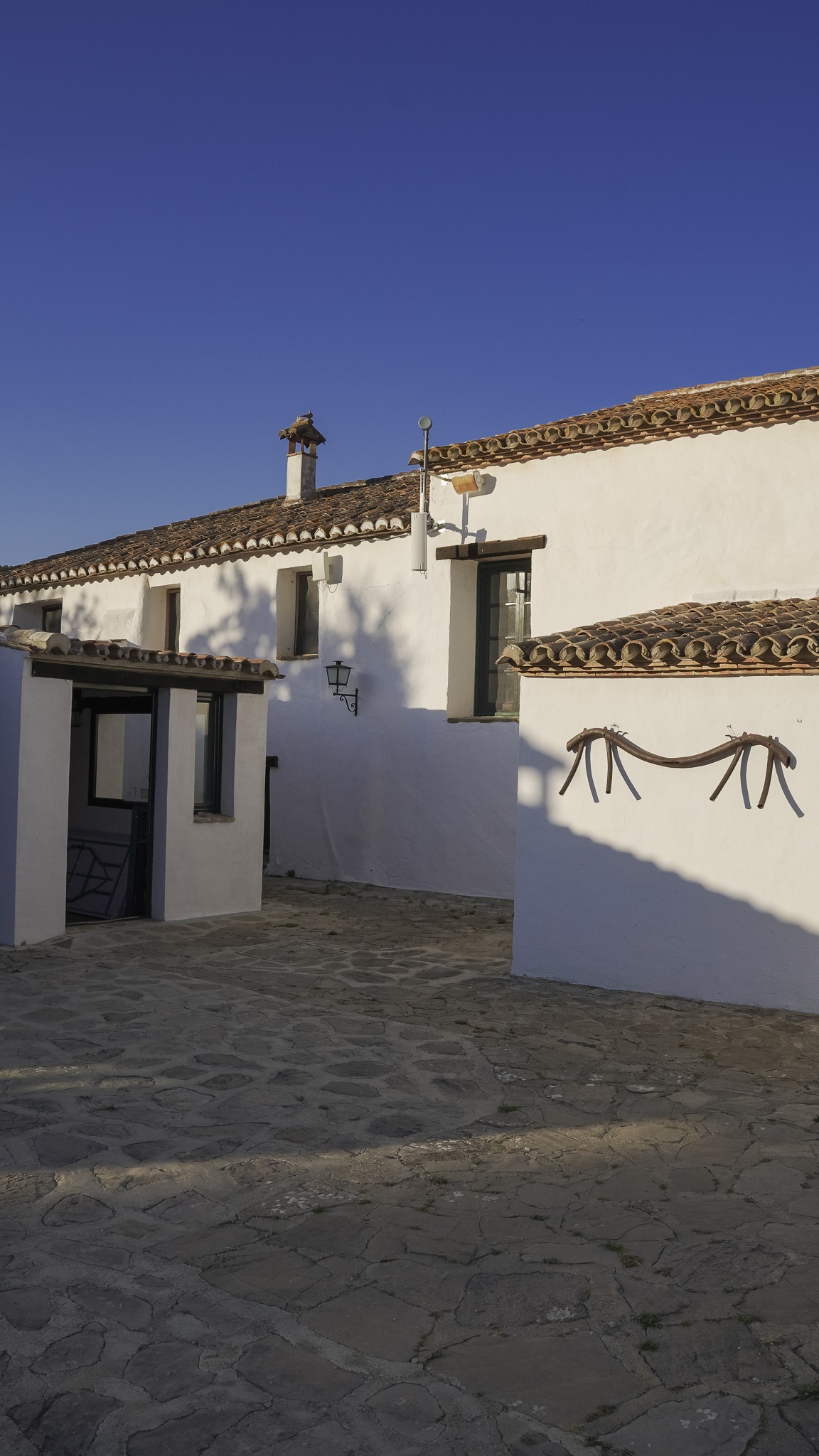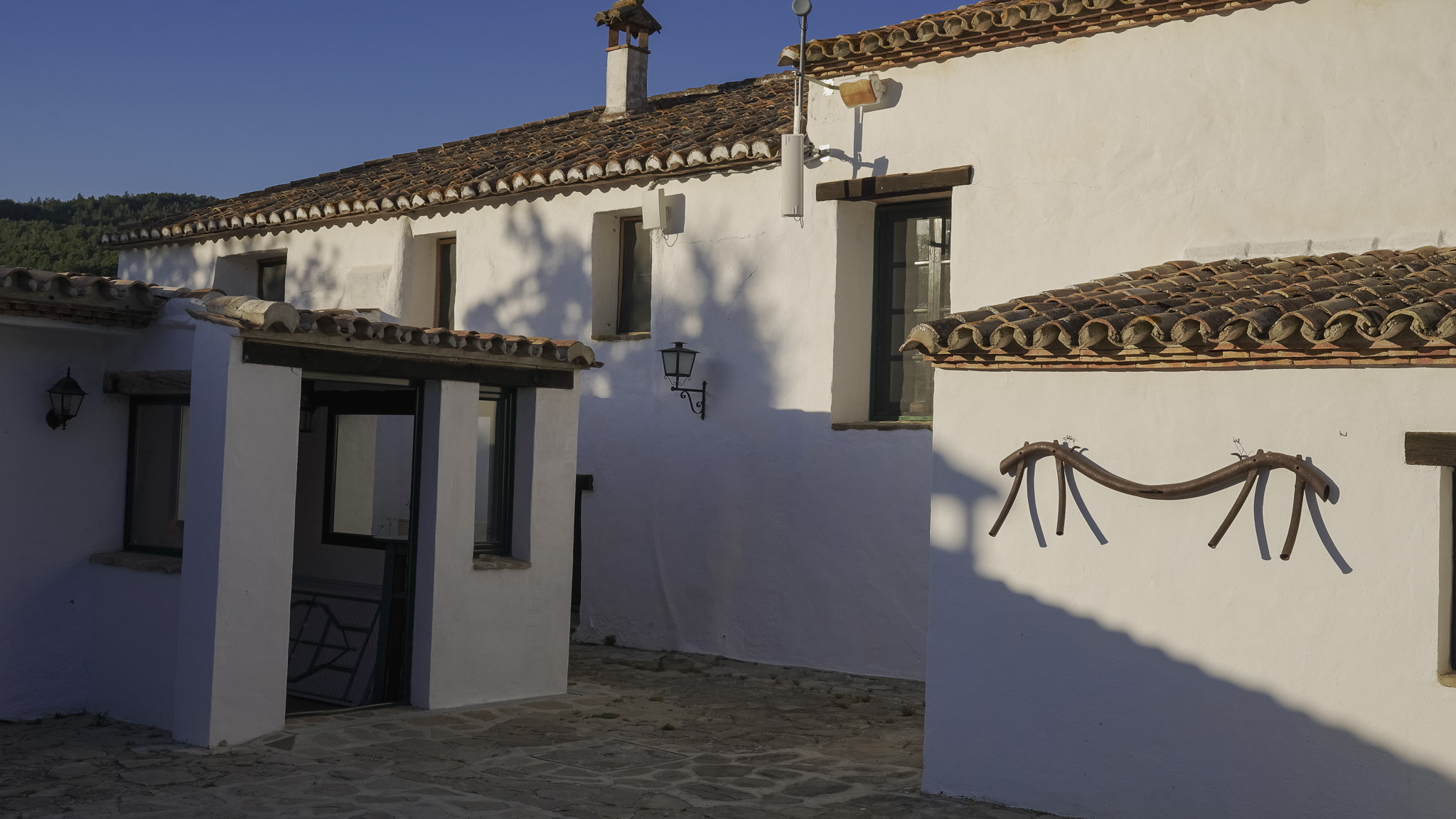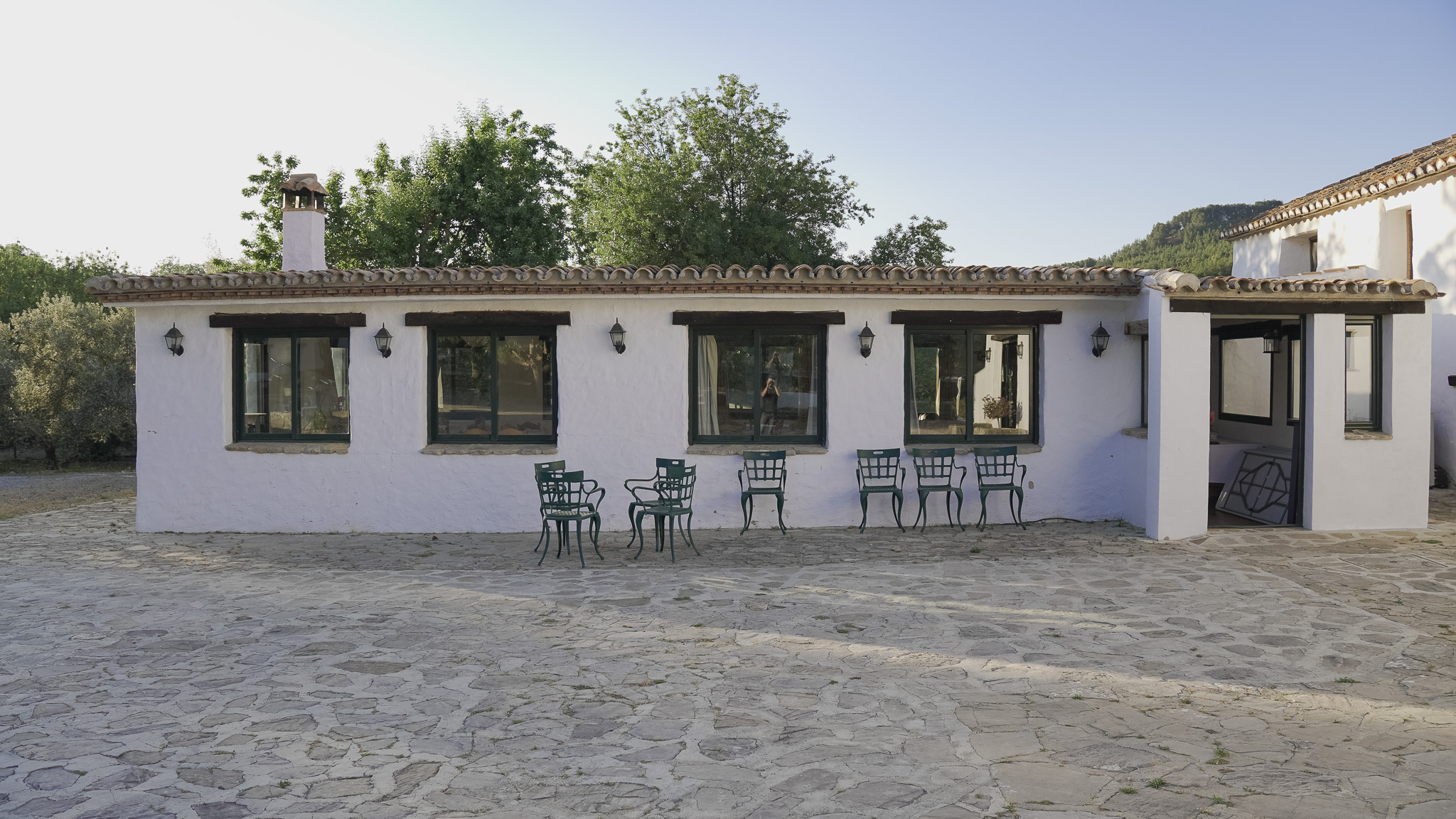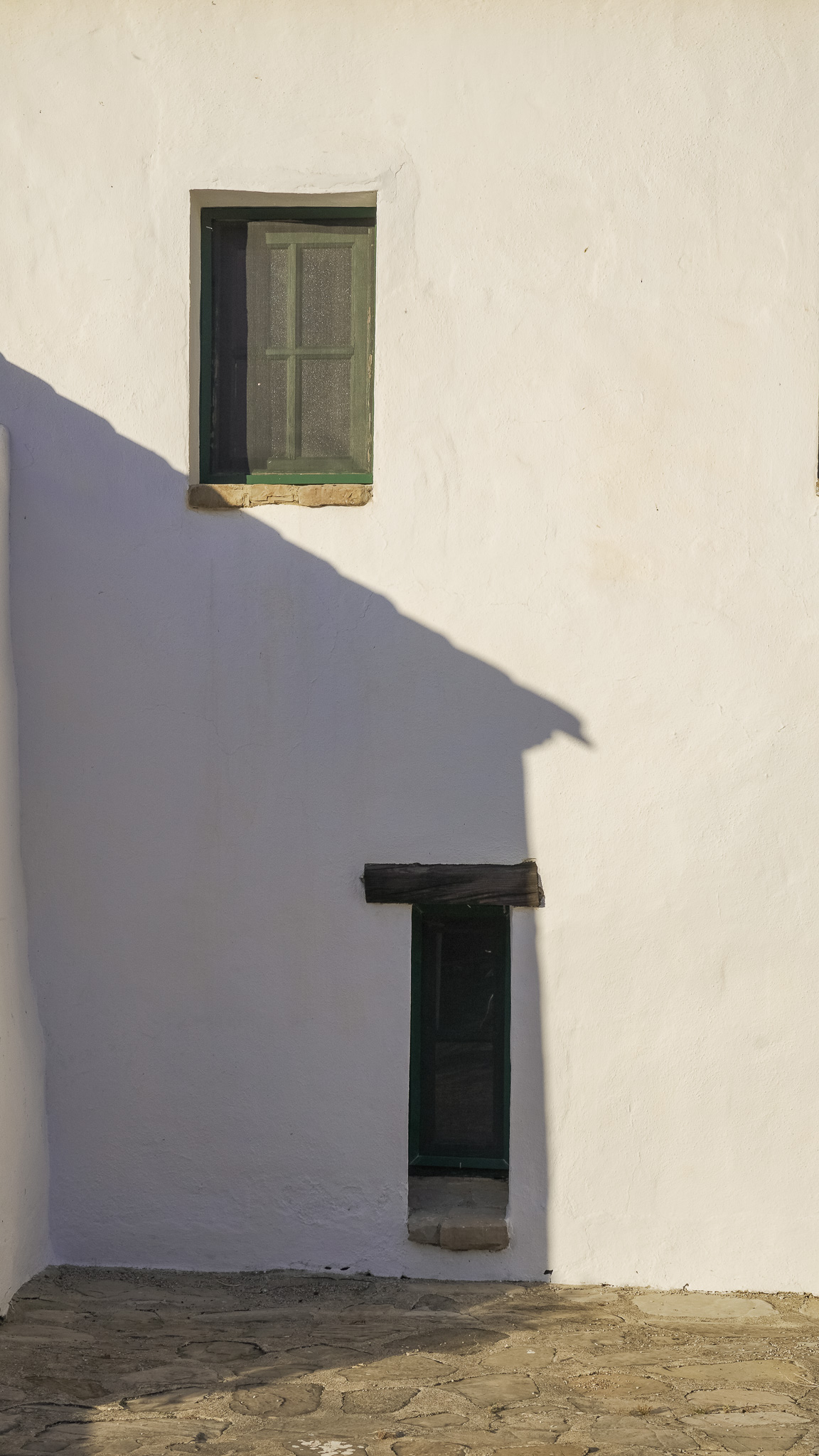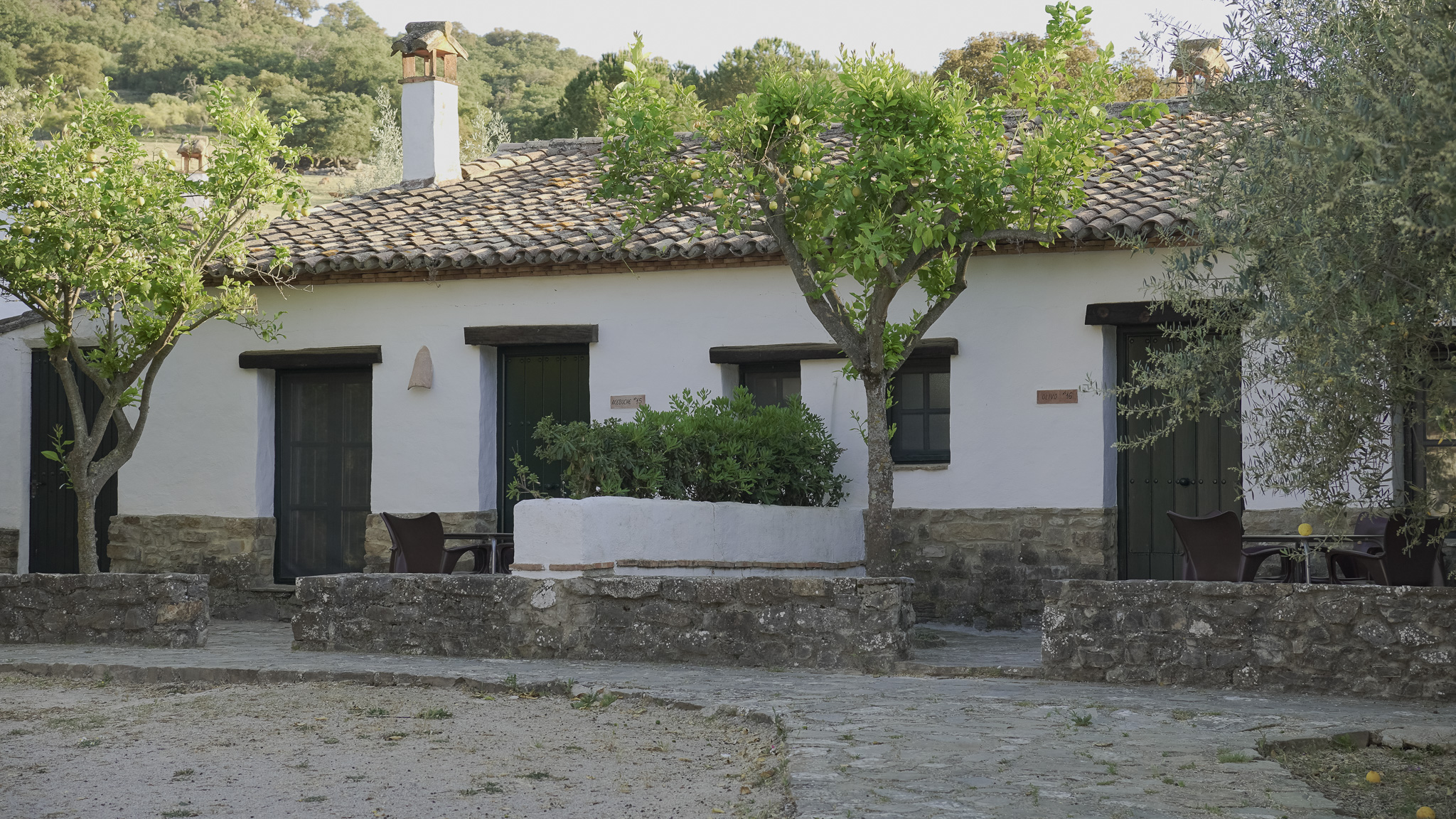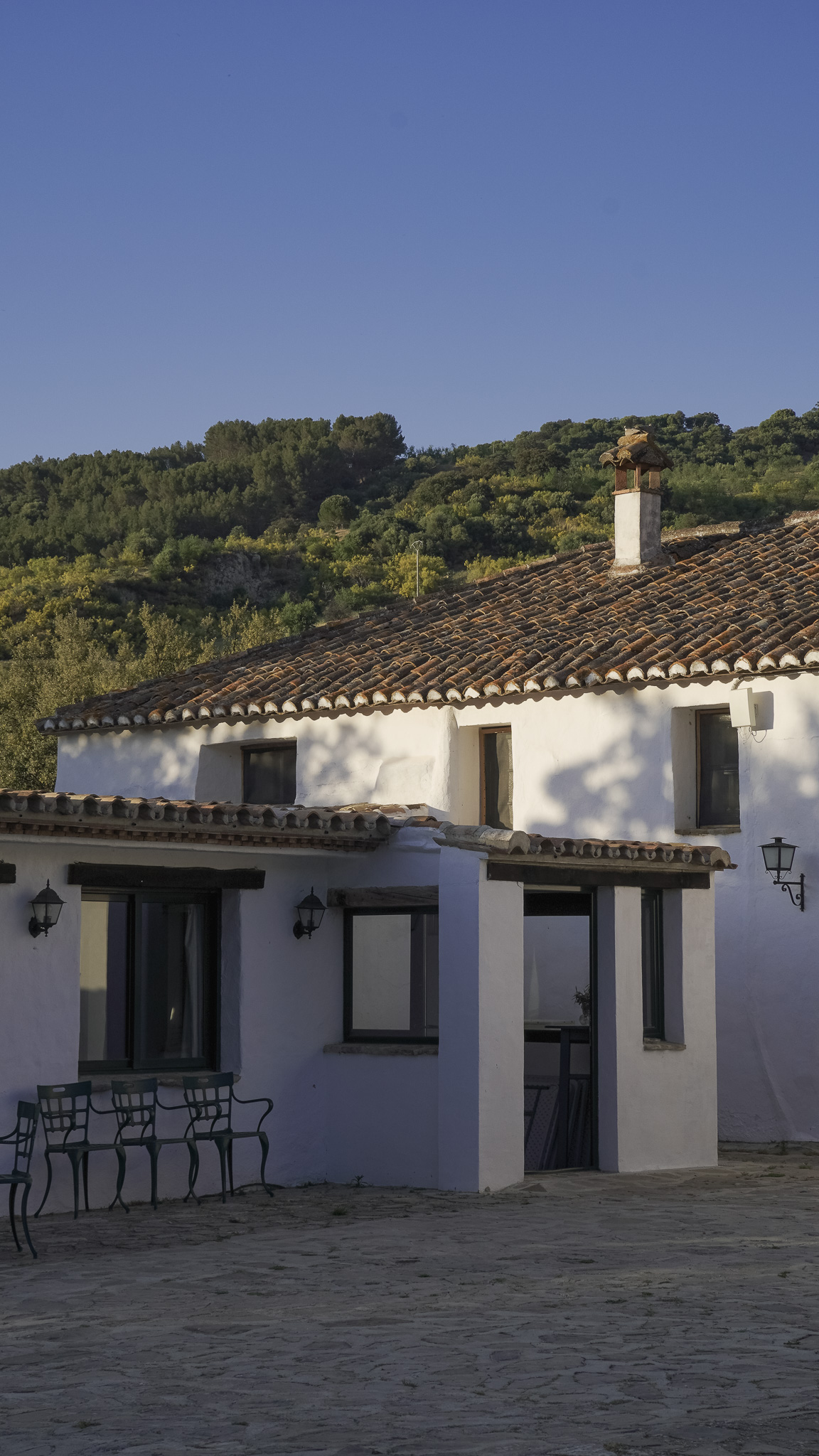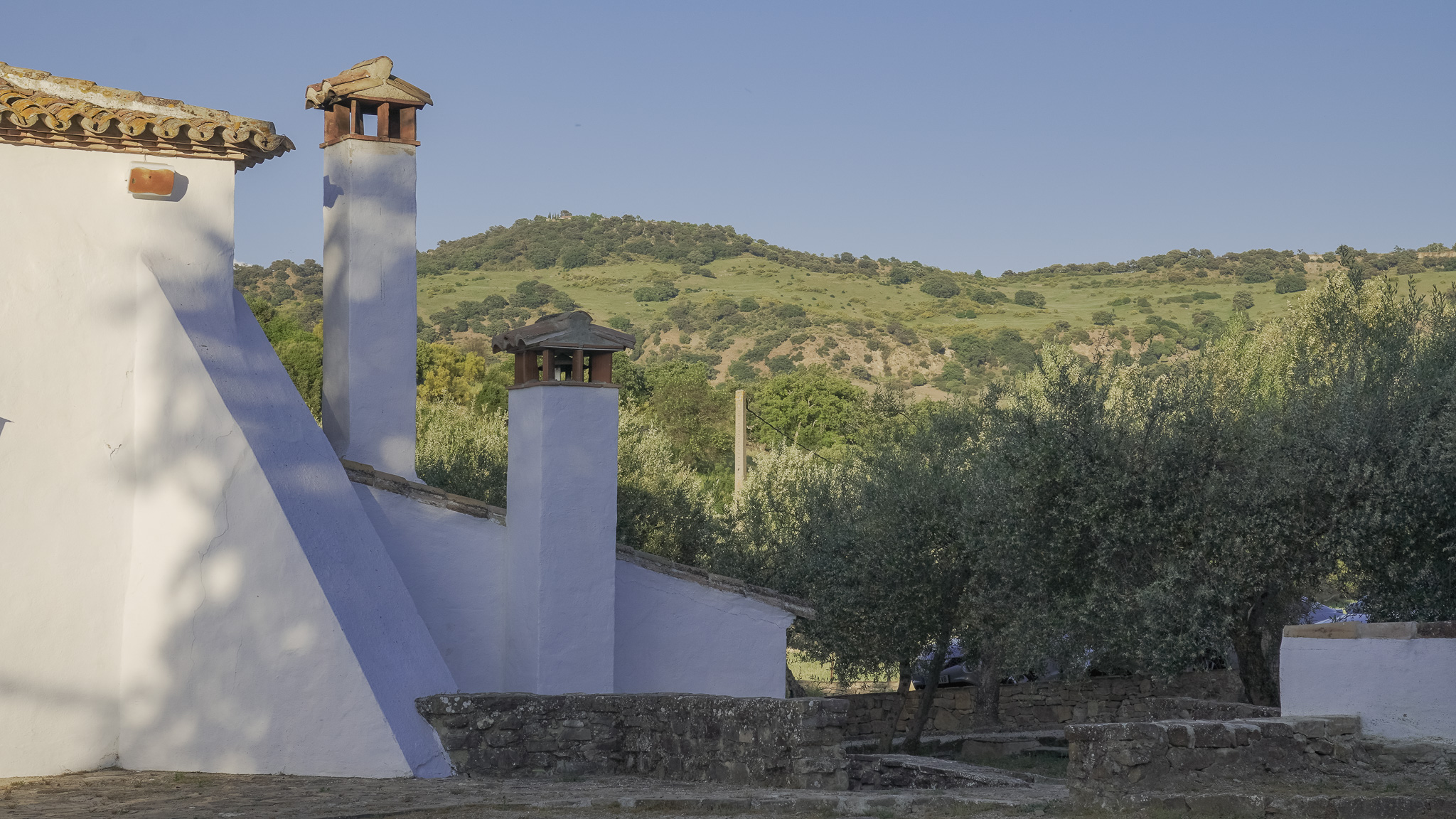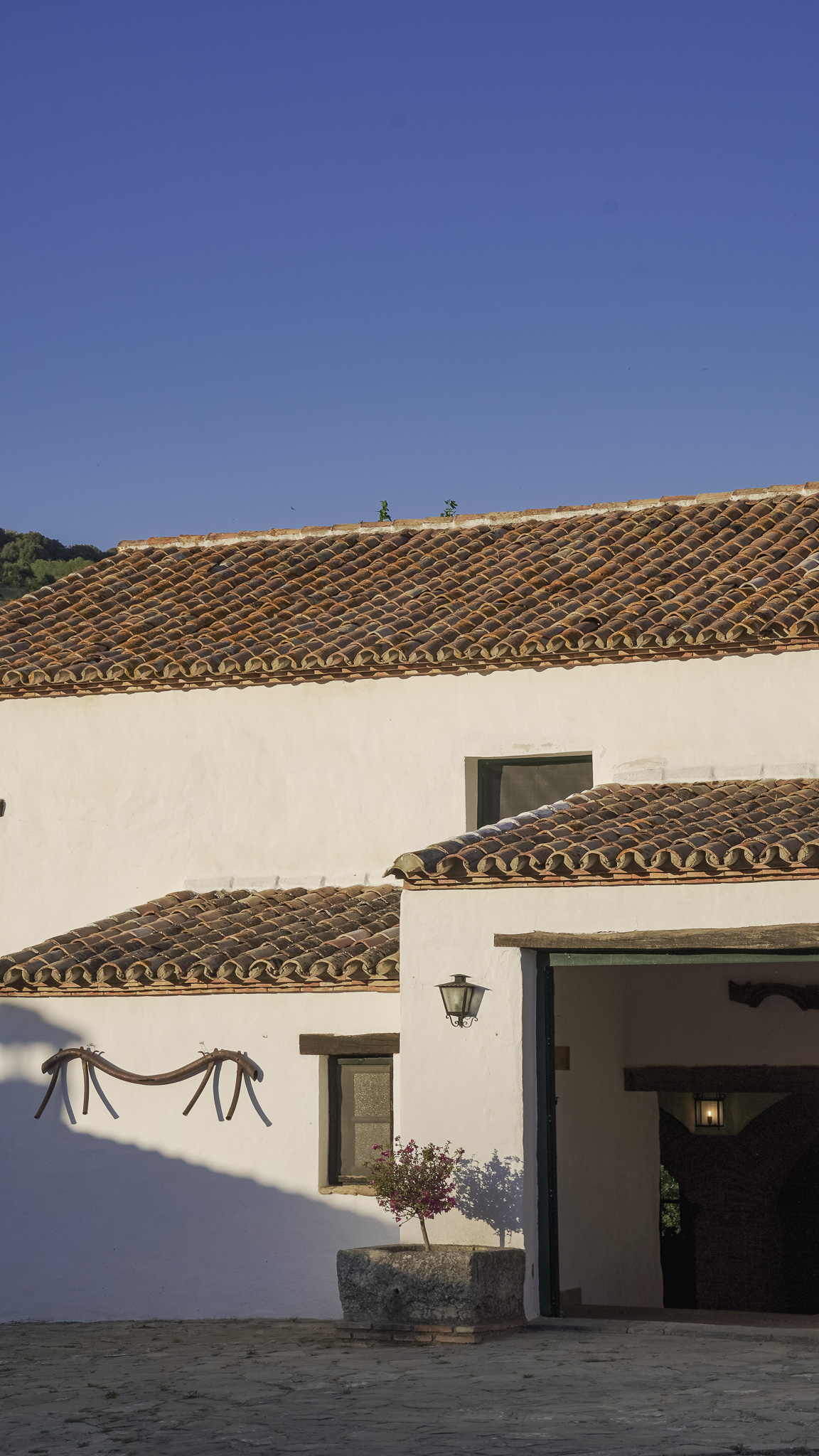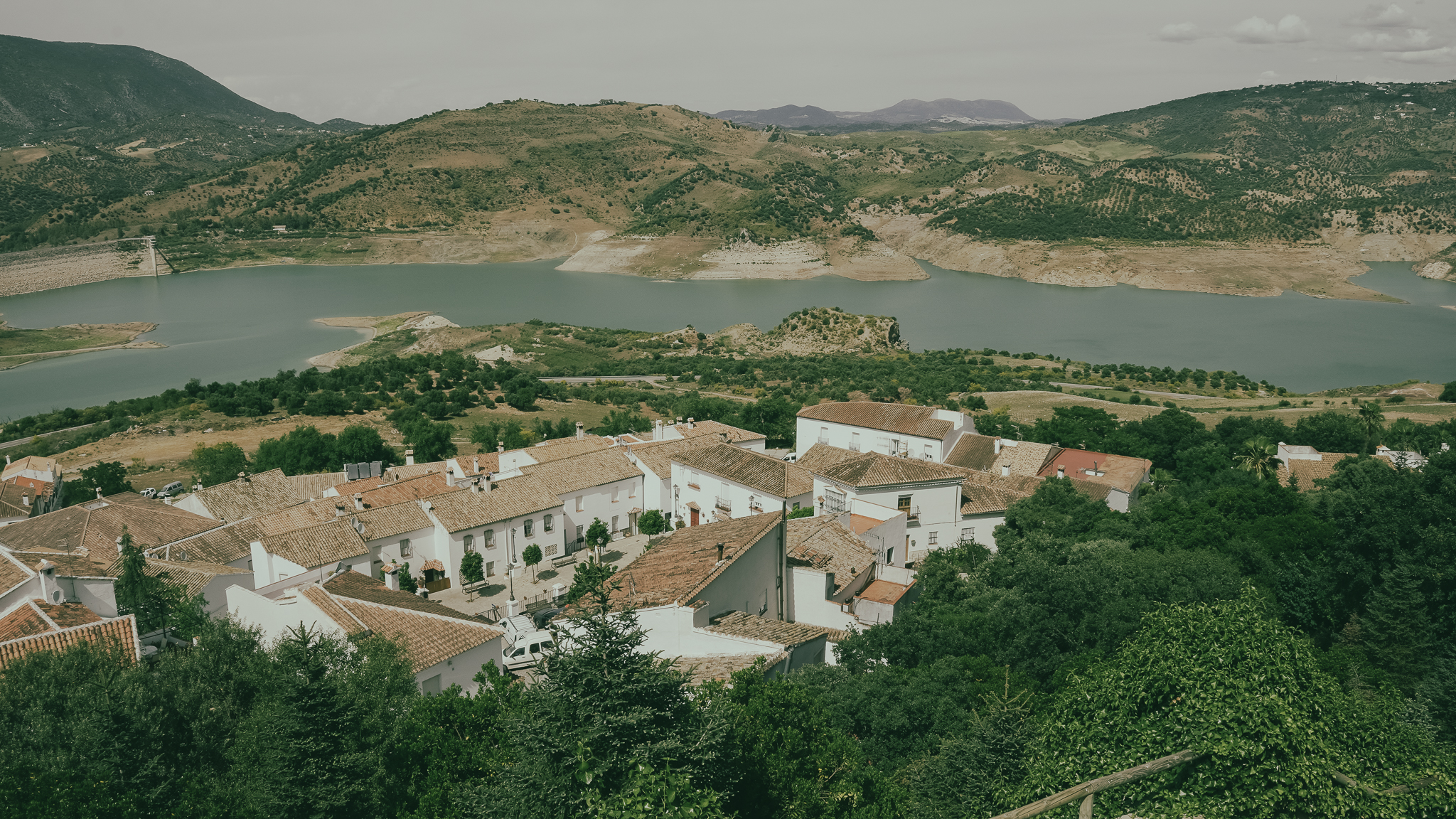Andalusian Farmhouses in Riverside and their inspiration: The “Cortijo”
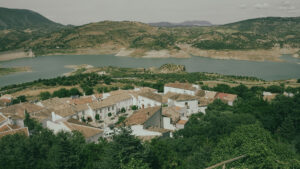
View coming into Zahara de la Sierra
Spring was upon us. Had we not been traveling according to season, the cherry Blossoms in Kyoto would have been unmistakable evidence that it was time to move to the hotter parts of the world. We had Andalucia, Marrakech and Jerusalem to explore before summer and then planned to move north to Prague and Warsaw before ending the summer with a 100 mile walk through the Scottish Highlands. Each leg of this journey was special in its own right but I’m especially excited to tell you about El Horcajo in Andalucia.
We arrived in Malaga and rented a 150cc honda motorcycle, it had worked out great in Nepal and continued to work well for the tiny streets of small rural villages but the highway was another question. The first few cars blew past us at speeds of probably 130 km/hr while our little steel horse couldn’t go much higher than 70; about 40 miles an hour. I knew this was going to be miserable so I immediately switched plans and our little guy turned out to be a blessing in disguise. We would take only country roads, two lane and often single lane roads cutting through canyons, fields and oak forests. It would, no doubt, take longer to get around but we weren’t in a hurry, we were tourists with the intention to take in the landscapes and architecture and this proved the perfect way to do it.
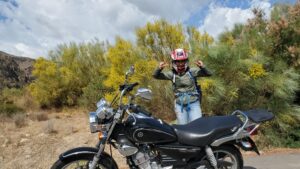
Sophie posing for the camera, we made a quick stop to take photos of the landscape.
We visited nearly every major city in Andalucia; from the coastal cities of Malaga and Cadiz, to the inland cities of Sevilla, Jerez, Cordoba and Granada. We visited the “Los Pueblos Blancos,” white villages scattered through the Spanish countryside with their white washed walls accented by mustard yellow, pastel pink and even cobalt blue. The streets are paved in cobbles and they are set in nature with canyons, forests or walls of granite rising up as backdrops. Eventually I’ll get around to writing about the full experience but this post is about the “Cortijo” and our visit to a beautiful rural hotel called El Horcajo.
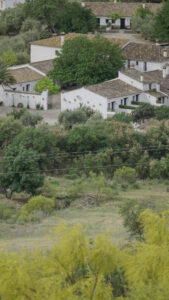
View of El Horcajo before dropping into the valley
Here in Riverside I had an immediate love for historic real estate. Yes, of course I need to sell homes to make a living but after walking through a turn-of-the-century Craftsman or a Spanish Revival I knew those were the ones I most wanted to spend my time in. I began buying books on residential architecture and diving into the history of these homes. I learned that George Washington Smith was the first man to return from Europe and build a “Spanish Revival” home he called “Casa Dracaena.” It was massively popular and he quickly changed from artist to architect designing many homes in the Santa Barbara area. I became interested in the original form of this architecture, wondering what Smith had seen; where he visited and what it must have been like. I wanted to experience not just the physical structure of these Spanish country homes but also their surroundings and accompanying experiences. My curiosity took us to a wonderful place called El Horcajo, meaning the piece of land at the interior convergence of two rivers.
This farmhouse was set deep in a valley at the eastern basin of the Grazalema national park. You could see the granite peaks up on the horizon and scanning down the valley, fields of green grass, yellow flowering shrubs and beautiful bright red poppies. There were large grazelands for sheep, goats and cows and it was quiet except for the constant chirping of the swallows. Like many of these country homes this had been converted into a small bed and breakfast. It’s a lovely place with a garden patio for sipping “Tinto de Verano,” a kind of Sangria drink popular in the south. They have a swimming pool, walking trails and a variety of paths to meander around the grounds and enjoy the setting.
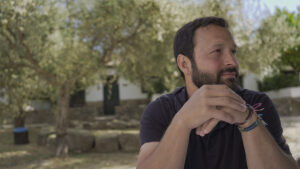
Having a Tinto de Verano on the patio
The main entry featured a courtyard, a central feature for these types of properties where at one time would have held the energy of the building. I’m sure people would relax there under the central tree or work on the various projects needed to keep a rural home running. At present it is simply access to several rooms so it has become a quiet space, only echoing the chirps of the swallows that fly through it. The entry to the building is rustic with exposed beams, brick and stone. It’s a classy but simple place with many doors and windows all left open to allow sunlight and breeze to flow through. There is a set of double doors at the top of a small staircase so as you enter the door the outdoor patio is visible and welcoming.
The rooms here were simple but simply beautiful. The tile floors, plaster walls, exposed beams, wrought iron railings and light fixtures all came together to create a cozy and safe environment. We were there in the spring but I can only imagine in the heat of summer or cold of winter how much more of a refuge these spaces would adopt. Since it was spring however we spent almost no time in the room. If we weren’t out walking the grounds or enjoying a meal on the patio we were out in the countryside riding the windy roads between villages and stopping every now and then to take in the scenery. We ventured through ancient cork oak forests, climbed over passes dropping into canyons and getting great views of the villages. It was the Moors who originally built many of these villages, opting for steep mountain sides that were difficult to attack and easy to defend. At times you could spot a watch tower or ruins from ancient fortresses. They say that Southern California is similar in climate and topography to Andalucia and generally I would agree with that however the built environment changes completely the experience of these two places.
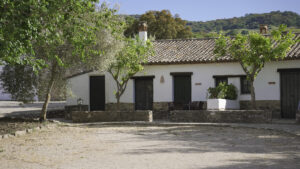
View of the hotel rooms
Staying at El Horcajo gave me a new appreciation for Spanish Revival architecture in Southern California. First of all, I’m not sure when the term “Spanish Colonial Revival” was adopted for these types of houses because I’m convinced now that they certainly are not Spanish Colonial. I’ve seen smaller Spanish Colonial cities like Cusco in Peru, Aguascalientes and Calvillo in Mexico and large ones like Mexico City and Santiago, Chile. Though there are similarities in the use of materials, the massing and general design is significantly different as is the setting in which they are located. I think a better term would be Spanish Farmhouse Revival and more specifically Andalusian Revival since in the north of Spain these types of homes are nowhere to be found. I’ve come to appreciate that our Andalusian Revival homes give the outward appearance and charm of the original homes but are much more polished and luxurious on the inside. Probably the most notable feature that changes the experience of the home is the hardwood floors and use of beautiful tile. As we entered the 1920’s the Arts and Crafts movement was declining but we still see evidence of its influence in our Andalusian Farmhouses. The inclusion of art glass, ornamental iron on doors and windows, colorful bathroom tile with murals and bands with floral motifs and elaborate light fixtures are examples of handicrafts that elevated the design of these homes. We took the rustic exterior, simplicity of floor plan and added to it the beauty of handicrafts.
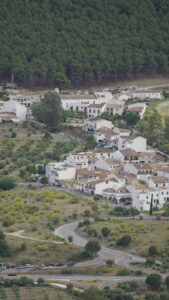
View of Montecorto, a small village close to El Horcajo
It was a pleasure to experience the original farmhouse, its rusticity and most notably its setting. The Spanish countryside is wonderful and if you’re interested enough to have read this far I certainly hope you get a chance to visit. Small villages like Grazalema and Setenil de las bodegas and smaller still like Benalauria and Villaluenga del Rosario will transport you to a different world at a different time. I don’t believe however that the purpose was to recreate these homes here in California. I believe our architects found them aesthetically pleasing and given our climate and hilly chaparral felt that these homes would look and feel at home here as well; and they were right. Our homes here in California were built at a much different time and for a different purpose and have gained over the years a respect and appreciation of their own deserving. Compared to the architecture that preceded them, such as our Victorian and Mission Revival that were overly embellished, the Andalusians are much more simple and refined. They are impressive but not in a way that seeks attention, it’s a subtle and effortless beauty baked into the very structure and absence of needless ornament. I can’t speak for many other cities in California but I know here in Riverside we have an incredible inventory of Andalusian Farmhouses from prominent estates to quaint bungalows and each is a joy to experience.
Below are a selection of photos from El Horcajo, enjoy!
